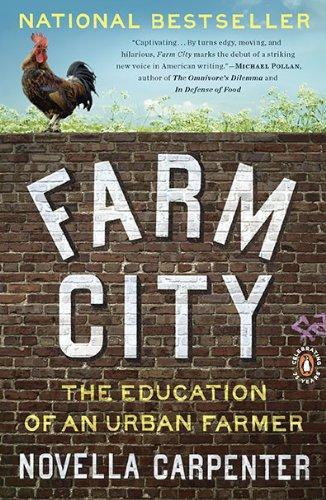
Farm City: The Education of an Urban Farmer
by
Novella Carpenter
Published 25 May 2010
In Tanzania, the government encourages the cultivation of every piece of land in the city of Dar es Salaam, where residents regularly grow vegetables and raise dairy animals and poultry. Though most Americans believe in the separation of city and country, there are pockets of urban farming here—notably in Philadelphia, parts of Brooklyn, Detroit, and East Austin. In San Francisco, I had recently heard about a four-acre urban farm that sprouted up next to the highway. Willow’s urban farms were multiplying as well. Though most of us were small-time operations with less than an acre of land, added together, we made a considerable-sized farm. My role in this scattered-acres concept was, at least temporarily, the pig part of the idealized, rhizomatic farm.
…
I could guess—Big Guy and his infernal bouf bouf. “And Wilfrid froze in his tracks, blinked twice, and then shook his head.” We both started laughing at that. Wilfrid was an immigrant from one of the poorest countries in Africa. Benin probably had, like China and Ghana, a robust urban farming scene. Maybe he had no idea how abnormal my urban farm—his urban farm—was. Or maybe it was that I paid the rent on time, didn’t deal drugs, and had planted a beautiful vegetable garden next door, thereby notably increasing the value of his property. Some might argue I had been causing a bit of gentrification myself. But the pigs—and their odors—had put a stop to that.
…
A few weeks later the same dog dug up Agnes from her final resting spot and presented horrified backyard picnickers the ossified corpse as a gift. My beloved chickens were pets, almost human; I had never thought of them as meat birds. What I didn’t know then is that keeping chickens in Seattle had placed me squarely on the path toward urban farming. Chickens are the gateway urban-farm animal. Because of them, I would soon be learning how to kill and pluck a duck and a turkey. If smoking marijuana led to snorting cocaine, then chickens eventually led to raising meat birds. After I released the birds into the backyard, I officially updated our chalkboard tally: 3 turkeys 3 ducks 1 goose 14 chickens 50,000 bees (they were doing really well) 74 flies (ditto) 2 monkeys A few days later, I came outside to find Lana, her sister, and her guinea pig, Maya, in the backyard.
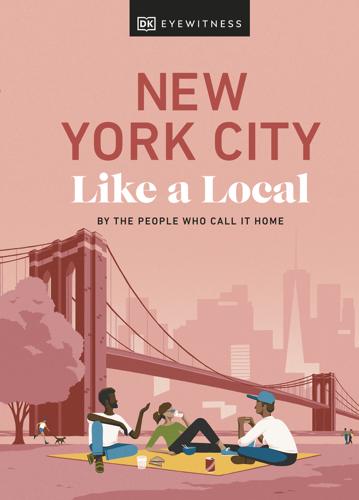
New York City Like a Local
by
Dk Eyewitness
g OUTDOORS g Contents Community Gardens and Urban Farms Within the concrete cityscape, gardens and urban farms have become vital spaces for residents to connect with nature, and each other. There are plenty to visit – here are just a handful. g OUTDOORS g Contents Community Gardens and Urban Farms THE BATTERY URBAN FARM LA FINCA DEL SUR ELIZABETH STREET GARDEN 6TH STREET AND AVENUE B COMMUNITY GARDEN GOVERNORS ISLAND TEACHING GARDEN LIZ CHRISTY COMMUNITY GARDEN BROOKLYN GRANGE AT SUNSET PARK HARLEM GROWN g Community Gardens and Urban Farms g Contents Google Map THE BATTERY URBAN FARM Map 5; The Battery, State Street and Battery Place, Financial District; ///stores.gossip.loves; www.thebattery.org Plopped in Lower Manhattan’s Battery (p165) is this lovely plot, which was created to teach New Yorkers all about sustainable farming.
…
The garden also hosts enchanting music and poetry events. » Don’t leave without stopping by the delightful Creative Little Garden and 6BC Botanical Garden, both of which are also on 6th Street. g Community Gardens and Urban Farms g Contents Google Map GOVERNORS ISLAND TEACHING GARDEN Map 5; 778 Enright Road, Governors Island; ///claims.video.dare; 212-788-7900 Hop on a ferry to the serene and car-free Governors Island for a proper gulp of fresh air. Sure, the island’s urban farm is overrun with kids on field trips during the week, but come the weekend and it’s all yours. Learn all about the eco-friendly garden, take a class to hone in on a specific topic, or just befriend the farm’s gaggle of goats. g Community Gardens and Urban Farms g Contents Google Map LIZ CHRISTY COMMUNITY GARDEN Map 2; East Houston Street (between 2nd Avenue and Bowery), Lower East Side; ///shop.skill.port; www.lizchristygarden.us Size isn’t everything, you know.
…
Stonewall Inn ///cheese.chop.bronze The historic Stonewall Inn, site of the 1969 Stonewall riots, is still a bastion of New York’s LGBTQ+ community. g Contents OUTDOORS You need only look at the traffic-clogged streets to see that life in NYC is hectic. Urban farms, vast parks, and scenic riversides offer the calm and freedom locals cherish. g Contents OUTDOORS Green Spaces Live Sports Venues Community Gardens and Urban Farms Streets and Alleys Nearby Getaways Take a Tour: A perfect day out on the Upper West Side g OUTDOORS g Contents Green Spaces New York’s parks aren’t just open spaces. They’re gathering spots, birthday venues, date locales, and much-needed respites from the city’s grid of steel, brick, and concrete.
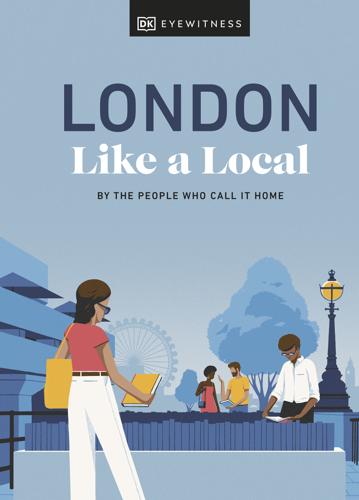
London Like a Local
by
Florence Derrick
Search for the grave of suffragette Emmeline Pankhurst and socialite Hannah Courtoy’s tomb (which the Victorians believed was a time machine – weird) before concluding with a coffee in the cemetery’s Café North Lodge. g OUTDOORS g Contents Community Gardens and Urban Farms Volunteer-led gardens and urban farms are a little-known side to London. Escape the heaving metropolis and get your hands dirty with the locals at one of these little rural outposts. g OUTDOORS g Contents Community Gardens and Urban Farms THE STORY GARDEN PHYTOLOGY MEDICINAL GARDEN SURREY DOCKS FARM VAUXHALL CITY FARM DALSTON EASTERN CURVE GARDEN HACKNEY CITY FARM CULPEPER COMMUNITY GARDEN g Community Gardens and Urban Farms g Contents Google Map THE STORY GARDEN Map 1; Ossulston Street, Kings Cross; ///salon.down.lonely; www.globalgeneration.org.uk This community garden, grown in upcycled skips, has transformed a plot of land behind the Barbican Library.
…
g Community Gardens and Urban Farms g Contents Google Map SURREY DOCKS FARM Map 5; Rotherhithe Street, Surrey Quays; ///silly.walks.handy; www.surreydocksfarm.org.uk While stressed bankers in suits pound the floors of Canary Wharf’s skyscrapers, a blacksmith in old-fashioned garb hammers red-hot slabs of metal on Surrey Docks Farm. This farm is incongruous but it’s a welcome slice of rural life. Local schoolkids learn about the city’s farming history, creatives partake in ceramic classes and couples stock up on seasonal veg in the farm shop. g Community Gardens and Urban Farms g Contents Google Map VAUXHALL CITY FARM Map 5; 165 Tyers Street, Vauxhall; ///pram.entertainer.woes; www.vauxhallcityfarm.org An afternoon spent on this central city farm might involve sheep-shearing demos or a chance to feed the chickens.
…
The folk here are passionate about supporting young people in the community with outreach and development programmes, reaching 7,000 local school children every year. » Don’t leave without popping into the nearby Tea House Theatre, which serves refreshing loose-leaf teas and slabs of homemade cake. g Community Gardens and Urban Farms g Contents Google Map DALSTON EASTERN CURVE GARDEN Map 3; Dalston Lane, Hackney; ///hobby.ladder.wiped; www.dalstongarden.org A social enterprise since 2012, Dalston’s eco garden – built on an old railway track – is an oasis. Bees drift from herb to flower and groups of friends catch up on tree stumps in the fairy-lit garden, usually to the soundtrack of someone strumming a guitar. g Community Gardens and Urban Farms g Contents Google Map HACKNEY CITY FARM Map 2; 1A Goldsmiths Row, Hackney; ///global.spin.flag; www.hackneycityfarm.co.uk Almost entirely run by volunteers, Hackney City Farm is all about community.
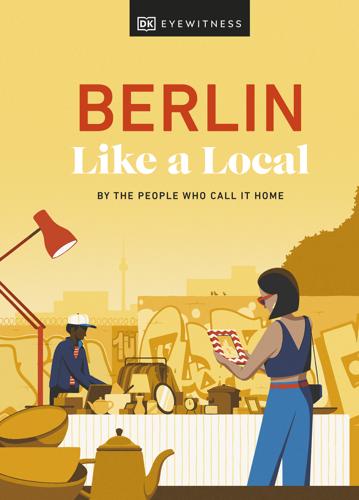
Berlin Like a Local
by
Dk Eyewitness
While parents dip their feet and kids splash about in the artificial waterfall, young Kreuzbergers head to the slopes to laze about, toasting the sunset over Berlin as dusk falls. g OUTDOORS g Contents Community Gardens and Urban Farms Eco-conscious Berliners (that is, 99 per cent of them) are all for locally grown produce and a greener city. Enter trending urban gardens, where all walks of life come to connect with nature – and one another. g OUTDOORS g Contents Community Gardens and Urban Farms HIMMELBEET Prinzessinnengärten Karma Kultur Gemeinschaftsgarten Neue Grünstraße Allmende Kontor Horstwirtschaft g Community Gardens and Urban Farms g Contents Google Map HIMMELBEET Map 6; Ruheplatzstrasse 12, Wedding; ///usages.jogging.spends; www.himmelbeet.de “Solidarity can change everything,” or so says the sign at this community garden.
…
g Community Gardens and Urban Farms g Contents Google Map GEMEINSCHAFTSGARTEN NEUE GRÜNSTRAßE Map 4; Neue Grünstrasse 13, Mitte; ///siblings.class.workshops Energy supplier Vattenfall’s creatively themed space will have you rethinking what a community garden can be. Littl’uns fill wellies with soil, students sprinkle flower seeds in bicycle baskets and parents plant herbs in saucepans – and it’s all delightfully free. » Don’t leave without taking a well-deserved break in the relaxation corner, where sun loungers and parasols are up for grabs. g Community Gardens and Urban Farms g Contents Google Map ALLMENDE KONTOR Map 4; Tempelhofer Feld, Neukölln; ///partner.spends.trim; www.allmende-kontor.de In the midst of all the rollerbladers at Tempelhofer Feld, green-fingered locals roll up their sleeves and get dirty.
…
This urban garden isn’t prettified (suitcases and basketballs are planters), but it’s a dreamy spot to just sit between beds of Swiss chard and enjoy the sun. g Community Gardens and Urban Farms g Contents Google Map HORSTWIRTSCHAFT Map 3; Karl-Marx-Strasse 66, Neukölln; ///gliders.tailed.sobered; www.horstwirtschaft.de Nothing says Berlin like a community garden nestled in a rooftop bar. Visit during the week and you’ll join a post-work crowd of creatives and techies growing some kale, downing tools only to sip an Aperol Spritz and jam to tunes, courtesy of an in-house DJ. Outdoors | Community Gardens and Urban Farms Liked by the locals “In a city full of apartment dwellers, Berlin’s community-driven green spaces are a welcome change of scenery: a chance to get outside, feel the soil between your fingers and reconnect with nature.”
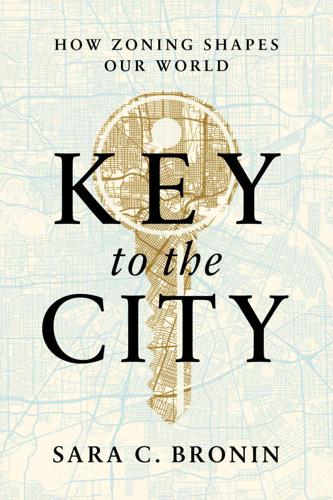
Key to the City: How Zoning Shapes Our World
by
Sara C. Bronin
Published 30 Sep 2024
Lloyd later recounted how at 8:45 a.m. on each public-hearing day, “agricultural activists, farmers, beekeepers, rooftop growers, and compost specialists” gathered in the overflow section of city hall. In 2013 the group emerged with what became Article 89, a comprehensive law promoting urban farming. The law allows a broad range of agricultural uses, from farming (including aquaponics and hydroponics) and farmers’ markets to composting, hen keeping, and beekeeping, regulating each of these activities to capture the benefits of food production while mitigating potentially negative impacts. As of right, the code allows “urban farms” both on the ground and on rooftops, permitting them in most places, after a review conducted by the city’s zoning staff. This review focuses on design issues, with specific provisions for “compatible” structures, perimeter fencing, landscape buffers, lighting, and vehicular circulation.
…
Instead of outsourcing the economic benefits of growing to rural and suburban areas, the zoning changes restored city residents’ ability to benefit economically from urban land. Word of these transformations spread widely. In 2017, the British newspaper The Guardian heralded “Boston’s rapidly growing reputation as a haven for organic food and urban farming initiatives,” citing the expansion of a container-farm company that, among other things, brings leafy greens to area farmers’ markets, and singled out Fenway Farms, a rooftop hydroponic facility that sits atop the famous baseball stadium. Glynn Lloyd remains hard at work too, expanding beyond directly selling vegetables to area restaurants to leading a community development financial institution to capitalize and support Black and Latino entrepreneurs, including agricultural entrepreneurs.
…
On the walk, he showed us his progress—but then started talking about an idea he had about finding a place in or near Keney to start agricultural activities in a serious way. Henry Keney might have smiled on the idea. Within a year, Virgo had inspired sufficient excitement and confidence that the city leased him an underutilized plot of land at the edge of Keney. He turned it into a productive urban farm with two large, enclosed greenhouses, an aquaponics facility, a woodworking shed, and a composting station, along with goats, chickens, and bees. As the farm grew, the new zoning code easily accommodated everything Virgo wanted to do—and he’s done a lot. On this campus, the Sustainability Project produces bountiful harvests of vegetables, fruits, and flowers, which are sold at farmers’ markets and to Hartford Public Schools or given away free to the community.

City 2.0: The Habitat of the Future and How to Get There
by
Ted Books
Published 20 Feb 2013
Unlike static green spaces like parks, this would be an actual farm as well as a place of tranquility in the city — not to mention a space that could generate the food to feed that city, with minimal harm to the environment or human health, just steps from residents’ tables. Birth of the Box Urban farming today is no longer a hobby practiced by a few dedicated enthusiasts growing food for themselves. It has become a truly innovative field in which pioneering ventures are creating real, robust, and scalable solutions for growing food for large numbers of people directly at the point of consumption.
…
Never mind that I was an MBA who had never grown anything bigger than some basil on my balcony for spaghetti sauce. The UrbanFarmers Box demonstrates that food can grow in the seemingly unlikeliest of places, such as on the Viadukt in Zurich. Image: Courtesy of UrbanFarmers Ltd. To test and prove my idea, I investigated urban-farm options and came across a French design for a 20-foot cargo ship container with a greenhouse module built on top. It looked like it could house an aquaponics system. The container was relatively small and portable — the size of two parking spaces — and could be easily toured in public places: in front of schools, supermarkets, or parking lots.
…
Recurring food safety scandals have reminded us how dependent we are on farms that operate far away, out of sight. What’s more, the extensive use of chemical additives, fertilizers, pesticides, and antibiotics has become an indispensable part of conventional agriculture today. This practice grants us higher productivity but at the expense of animal and human health. Urban farming tends to use truly organic practices and thus is less prone to such hazards. Roman Gaus serves up trout harvested from the UrbanFarmers Box. Image: Courtesy of UrbanFarmers Ltd. The basic business concept for an urban farmer is simple: Grow local food in the city, avoid middlemen and transportation distances, and exploit higher margins by selling directly to customers.
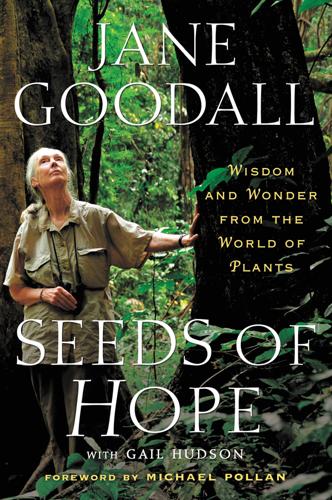
Seeds of Hope: Wisdom and Wonder From the World of Plants
by
Jane Goodall
Published 1 Apr 2013
In light of this, city planners across America are changing zoning regulations to encourage urban farms, run by private companies, to supply the demand for locally grown and organic food. Let me share a few examples. In Cedar Rapids, Iowa, an NGO is collaborating with the city’s planners to transform vacant, abandoned lots that were devastated by a flood in 2008 into a 2.5-acre farm. This will make a difference, as currently most food must be brought in from up to one thousand miles away. In Columbia, Missouri, an enterprising farmer has developed a 1.3-acre urban farm and is now allowed, by the city, to sell his produce. In Boise, Idaho, new regulations have been created that encourage the growing of food in the city in order to help the tough economy.
…
Until very recently, when I heard about the exciting developments that were taking place because a group of citizens, whose unofficial meeting place was a coffee shop, began to make new plans for their city. And growing food was at the heart of these plans. The very fact that there are so many vacant plots in Detroit means that urban farming and gardening can truly thrive. The Detroit Food Policy Council knows that farming empowers people as well as providing much-needed fresh and local food, and today urban farming is driving the city’s economy. Townspeople can “adopt a lot” for free—and there is so much scope, so much space. One young man has eight plots already and is planning to get three more, and he is training young people to work on his farm.
…
“U.S. and World Population Clock,” US Census Bureau, last modified July 29, 2013, http://www.census.gov/popclock/. 5. “ ‘Urban knights’ ” Susan McCoy, “Garden Media Group Unveils 2012 Garden Trends Report: Cultivate the New Good Life with the Power of Plants,” Garden Media Group, accessed August 21, 2013, http://www.gardenmediagroup.com/pressroom/GMGtrends12.pdf. 6. “ ‘ “urban grit” influence to protect’ ” Ibid. 7. “ ‘three gardens and a pamphlet’ ” John Gallagher, “Taja Sevelle’s Urban Farming Began in Detroit; Now Has 20-Country Network of 61,000 Community Gardens,” Detroit Free Press, June 9, 2013, http://www.freep.com/article/20130609/BUSINESS06/306090027/Detroit-farming-Taja-Sevelle. 8. “planting of over sixty thousand community gardens” Ibid. 9. “rooftop in the Bronx” “Cities Ease Rules to Encourage Urban Farms,” September 20, 2011, http://www.tajasevelle.com/index.php?page=news&n_id=125. 10. “create a ‘paradigm shift’ ” “Faces of Public Health: Taja Sevelle,” New-PublicHealth, May 13, 2013, http://www.rwjf.org/en/blogs/new-public-health/2013/05/faces_of_public_heal.html. 11.

Palaces for the People: How Social Infrastructure Can Help Fight Inequality, Polarization, and the Decline of Civic Life
by
Eric Klinenberg
Published 10 Sep 2018
“It took some time to see it,” she explained, “but after a while we realized that Englewood could be farmed just like Mississippi.” It’s an ideal place not only for developing community gardens but for urban farming, potentially on a large scale. She wasn’t the only one to see the possibility. In 1992, Les Brown, who founded the Chicago Coalition for the Homeless, began advocating for an urban job-training program organized around farming. It was a bold idea, but a premature one, since the concept of urban farming was not yet established, and few shared his vision for transforming Chicago’s empty lots into sites of agricultural production. He persisted, as did one of his colleagues, Harry Rhodes, and in 1998 their organization, Growing Home, acquired land for a farm in Marseilles, Illinois, seventy-five miles from Chicago, which they used to train production assistants.
…
The lot turned out to be located at the crossroads of three distinct gang territories, and it was polluted with PCBs. But after four years of remediation, which involved bringing in truckloads of new soil, building good relationships with nearby residents, and persuading the city to amend a local zoning ordinance, Growing Home opened the Wood Street Urban Farm in Englewood. It was Chicago’s first organic urban farm. Two years later, it opened the Honore Street Farm nearby. “Our goal,” Rhodes told me, “is to turn Englewood from a food desert to a food destination.” Rhodes understands that it will be a long, difficult process, and he vividly recalls how bad things were when the farm project began.
…
It doesn’t make those who are vulnerable to extreme weather any safer, nor does it make the places they live healthier. To do all of that Chicago would have to invest in less glamorous but far more accessible green spaces: community gardens and urban farms. Pugh, who had a long career in the private sector before moving into philanthropy, told me that one motivation for getting so involved in Englewood’s farm and garden movement is establishing proof that the concept works. In addition to her own garden, she has developed two urban farms, the Hermitage Community Garden and the Englewood Veterans Gardens, in partnership with Growing Home. The new green spaces yielded much more than fresh produce.
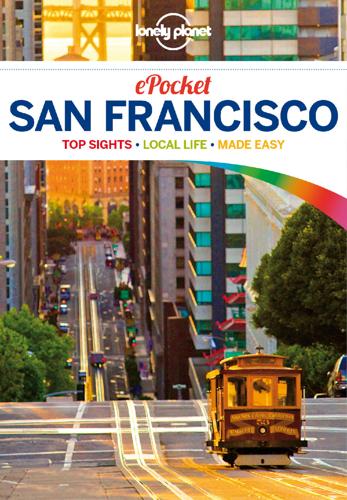
Lonely Planet Pocket San Francisco
by
Lonely Planet
and
Alison Bing
Published 31 Aug 2012
Fine Dining Bargain Gourmet Live Music Drinks Gay/Lesbian/Bi/Trans SF Entertainment Museums & Galleries Outdoors Architecture For Kids Shopping Freebies Survival Guide Before You Go Arriving in San Francisco Getting Around Essential Information San-Francisco Neighborhoods Golden Gate Bridge & the Marina Fisherman’s Wharf & the Piers North Beach & Chinatown Downtown & SoMa Hayes Valley & Civic Center The Mission The Haight Golden Gate Park & the Avenues Welcome to San Francisco Classic Victorians around Alamo Square (Click here) in the Haight RICHARD CUMMINS/LONELY PLANET IMAGES © Fisherman's Wharf sea lions and Telegraph Hill parrots agree: this town is totally wild. Somewhere between urban farms and legendary surf beaches you'll find San Franciscans in their natural habitat, going crazy for California cuisine and Pride parades. Come as you are, and ditch your inhibitions — you won't be needing those in San Francisco. San Francisco Top Sights Golden Gate Bridge ( Click here ) Other bridges are marvels – this one’s magic.
…
Take lunch to another level with dumplings at City View (Click here ), then reach new artistic heights in the rooftop sculpture garden at the San Francisco Museum of Modern Art (Click here ). Pop into the Contemporary Jewish Museum (Click here ) for think-piece art in illuminated galleries. At Union Square, score last-minute half-price tickets to American Conservatory Theater (Click here ), and dine on urban-farm-fresh fare at Sons & Daughters (Click here ). Need to Know Before You Go Your Daily Budget Budget Less Than $100 › Dorm beds $25–$30 › Food-truck dishes $5–$10 › Mission galleries & murals free › Live music at Hotel Utah $5–$12 Midrange $100–$250 › Motel/downtown hotel $80–$180 › Ferry Building meal $15–$35 › SFMOMA $18 › MUNI Passport $14 Top End More Than $250 › Boutique hotel $150–$380 › Chef’s tasting menu $65–$140 › City Pass (MUNI + five attractions) $69 › Alcatraz night tour $33 Useful Websites Lonely Planet (www.lonelyplanet.com/SanFrancisco ) Expert local advice.
…
His Dungeness crab and black truffle custard bring such outsize flavor to faux-shark’s-fin soup, you’ll swear Jaws is in there – especially paired with 1968 Madeira by star-sommelier Yoon Ha. ( 415-685-4860; www.benusf.com; 22 Hawthorne St; mains $25-40; 5:30-10pm Tue-Sat; Montgomery) 13 Sons & Daughters Californian $$$ Offline map Google map Urban farm-to-table cuisine, made with ingredients grown by the staff gardener in the restaurant’s one-acre garden combind with the quick wits and sharp knives of co-chef/owners Matt McNamara and Teague Moriarty Instead of meat and potatoes, they’ll serve you wild boar cooked in hay and heirloom potato-skin consommé.
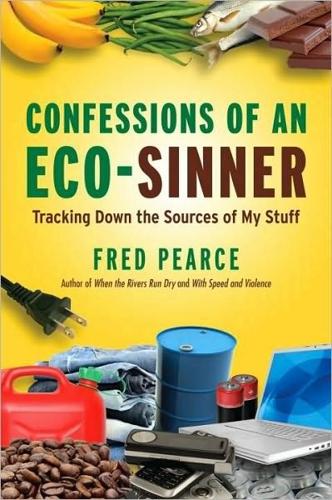
Confessions of an Eco-Sinner: Tracking Down the Sources of My Stuff
by
Fred Pearce
Published 30 Sep 2009
They often invest in novel systems for maximizing yields on tiny plots. Hydroponics, a system in which roots are suspended in a liquid growing medium, is popular in places as diverse as Singapore, Montreal and Bogotá. Because there is no need for soil, hydroponics is also great for rooftop gardens. ‘Urban farming is often disparaged as being merely “kitchen gardening”, or marginalized as a leftover of rural habits. But it goes far beyond gardening,’ says Jac Smit, president of the Urban Agriculture Network run by the UN Development Programme. And it is, he says, an efficient use of resources. Typically, intensive production of vegetables in urban areas uses less than a fifth as much irrigation water and one-sixth as much land as mechanized rural cultivation.
…
Recent studies in the Philippines and elsewhere have linked better child nutrition to the local production of food in urban areas. So a better approach would be to help make it safe, by educating farmers about the risks, and treating sewage to remove pathogens but leaving the nutrients, for instance. But my point is this. Urban farming shows how people are resourceful and ingenious. In most places, and most of the time, we can and will feed the world. As B. B. Singh put it to me as we toured the farms of northern Nigeria, ‘There is no reason why even Africa cannot feed itself.’ 33 Beyond the Clockwork Orange: Why We Can Green Our Cities A HUNDRED YEARS ago, the largest city in the world was London, with a population of 6.5 million.
…
abortions, Manila 154 Abramovitch, Roman 222 Acer 160, 163, 165 Africa Darfur droughts 335 desertification 108, 334–8 fertility rates 366 Homo sapiens evolution 328–9 land management 334 tourism 320–1 Agarwal, Ravi 291 Agnes 71–2 Agrocel 129, 131 AIDS clinics 73–4 demographic effects 72–3, 366 elderly carers 71–2, 73–4 societal effects 72–3 air freighting organic food 102 plant food imports 101, 111–12 air travel Buncefield fuel depot explosion 236 CO2 emissions 233, 236–7 Kyoto Protocol 236–7 reducing 357 short-haul flights 233 total emissions 306–7 UK airports 236–7 Akter, Nazma 143 Alaska caribou migration routes 217–20 climate changes 218–19 oil 214–20 Prudhoe Bay 214–20 racial issues 216–17 Albania, sage 57–8 Alexander, Christopher 347 allotments 342 aluminium environmental footprint 195–6 properties 191–2 recycling 199–200, 256, 285–6 Rio Tinto Aluminium 192–4 smelting 192, 194–7, 226 Ambrose, Stanley 327, 329–30 AMG Resources, steel recycling 256 Amnesty International 276 Anglo American, metal mining 203 antimony, China 205 apples, Kazakhstan 90–1 Aquaculture Certification Council 69 Aral Sea climate change 150 drying up 146–7 pollution 150 Archer Daniels Midland (ADM) cocoa 96 palm oil 78 Asda 142 Associated British Foods 80 Association for Responsible Mining 246–7 Asustek 161–4 auctions coffee 31–2 fish 49 Australia aluminium 192–8 Brisbane 303–4 coal 230 cotton 119–22 droughts 120 eco-projects 345 Gladstone 192–7 Kyoto Protocol 198 Melbourne 345 tea tree oil 59–60 Ausubel, Jesse 347–8 Awaj Foundation 141–2 Badger brewery see Hall and Woodhouse bananas 84, 86–9 Banc d’Arguin marine national park 50–2 fishing permits 51–2 WWF 51, 54 Bangladesh Awaj Foundation 141–2 banking system 68 child labour 143 corruption in 65 deltas 62–3, 66, 70 Dhaka 138–45, 345 family sizes 364 female emancipation 144–5 garment workshops 138–44 Khulna 63–4, 67–8 King prawns 62–70 land grabbing 64–5 wages 142–3 Bangladesh Frozen Food Exporters Association 67 barley malts, beer 38–9 Barry Callebaut 96 Bazalgette, Joseph 254 beaches, over-cleansing 263 Beckton sewage treatment works 254 beer barley malts 38–9 brewery closures 37 Hall and Woodhouse 37–9 herb 39 ingredients 38–9 local brews 36–7 summer ales 39 water for 38 yeasts 39 Bertrand, Nick 350 BHP Billiton 203 Bihar 289 bio-capacities 317–18 biodiesel, European Union laws 77 Biodiversity (formerly International Plant Genetic Resources Institute) 84 biodiversity loss, and sugar 83 biofuels 82, 355 burying CO2 with 357 and palm oil 77 threat of 341 bismuth 207 black tiger prawns see king prawns books carbon footprint 312–13 research for 313 Borneo, rainforest clearances 169, 172 Box, John 350 BP, targetneutral scheme 305 Brasilia 347 bread Lighthouse 42 processes 42 stoneground wholemeal flour 42–4 yeasts 42 breweries, closures 37 Brisbane 303–4 British Airways, carbon offsets 304–5 British Trust for Ornithology 262 Broadacre City, Lloyd Wright 346–7 Brown, Gordon, eco-cities 350 brownfield sites development of 351 wildlife 350–1 ‘built environment’ emissions CO2 emissions 242 domestic greenhouse gases 242–4 Buncefield fuel depot explosion 236 Bunting, Madeleine 365–6 Burden, Graham 122, 128 cabbages 89 Cafédirect coffee 27–30 and fairtrade philosophy 35 prices paid 31–2 CAI (Computer Aid International) 299–300 Caldwell, Jack 365 Cameron, David 45, 103, 359 Cameron, Ray 219–20 Cameroon cocoa 94–7 cotton 136 slash-and-burn agriculture 95 carbon footprint books 312–13 calculating 371 publishing 313 carbon offsets see also CO2 emissions aircraft emissions 303–4, 306–8 availability 304–5 British Airways 304–5 Climate Care 308, 310, 312 costs 308 definitions 305 forest maintenance 308–9 Kyoto Protocol 304, 311 Orbost estate 305–6 programme range 304–5 Sky 305 Carbon Trust 241–2 CarbonNeutral Company 305–6, 311 cardamom 58 Cargill cocoa 96 cotton 123 palm oil 78 Sun Valley chickens 78–9 caribou, migration routes 217–20 cement 240 cereals, for meat production 340 CETC (China Electronics Technology Group Corporation) 272 Chang, Mage 165 charities, textile recycling 266–9 cheese 40–1 Chen, David 162, 163–4 Cheng, Sammy 159, 163–4, 165, 371 Cheng, Shengchan 280–2 Cheung, Yan 284–5, 371 chickens free-range organic 39–40, 41 soya fed 79 child labour Bangladesh 143 computer recycling 288–90 cotton industry 124 India 124, 288–91 Ivory Coast 97 Pakistan 124 China see also Shenzhen; Suzhou aluminium recycling 285–6 antimony 205 computer industry 160–1, 165, 167 deforestation 171–2 ginger 58 mobile phones 271–2 one-child policy 364 paper recycling 280–2, 284–5 plastic bottle recycling 256–7, 282–3 power stations 358 Qiaotou 179 recycling ethos 282–4 small commodities markets 177–80 tin 205 traditional medicines 181–3 Yiwu 177–80 Zhangjiagang 169, 171 zinc 205 China Electronics Technology Group Corporation (CETC) 272 Chinatext, cotton 123 Chococo 99 chocolate see also cocoa fairtrade 98 gourmet 99 UK introduction 93–4 world-wide consumption 94 Christmas decorations 178 chromium, Kazakhstan 205 cinnamon 58 cities see London; mega-cities; urban farming city metabolism 239–40 civil wars 208–10 Clean Air – Cool Planet 305 Climate Care 308, 310, 312 climate changes Alaska 218–19 economic implications 358 Mount Toba eruption 326–7 cloves 58 CO2 emissions see also carbon offsets accumulation 316 air travel 233, 236–7 built environment’ 242–4 burying with biofuels 357 cement 240 coaches and buses 235 coal-fired power stations 228–9, 356 global reductions 370–1 global warming 354–5 Heathrow airport 235–6 targets 357 train travel 232–3 coaches and buses 235 coal-fired power stations 228, 356 CO2 emissions 228–9, 356 Drax 228–30 imports for 229–31 Coastal Development Partnership, Kulna 63 Cockerill, Ian 19 cocoa Archer Daniels Midland 96 Barry Callebaut 96 Cameroon 94–7 Cargill 96 fairtrade 98 history 93–4 Ivory Coast 97 middlemen 96–7 Nestlé 96 price crashes 96 processing 98 smallholdings 94–6 western discovery of 93 coffee auctions 31–2 Cafédirect 27–30 cooperatives 28–30 fairtrade 32–4 global trading 31 Kilimanjaro 27–9 organic farming 30 prices 28–9, 31–3 roasting 33–4 shipments to London 33 Starbucks 30 coltan see tantalum community projects fairtrade coffee 32 fairtrade cotton 131, 133–4 Compal 165–6 Computer Aid International (CAI) 299–300 computer components 160–4, 161–4 metals for 205, 207–8 computer recycling 288–91 child labour 288–90 copper recovery process 288–90 illegal imports 291–2 computers, reuse 297–300 Computers for Schools Kenya 297–300 conferences, ecological footprints 318 congestion charge, London 345 Congo 276–7 conservation, herbs 56 consumption, globalized 7–10 contraception Philippines 153–5 religious attitudes to 153–4, 364–5 cooking, energy expenditure 103 copper production 203, 204 recovery 288–90 Cory, household waste management 251–3, 261 cotton Australia 119–22, 124 Cameroon 136 Chinatext 123 Cragill 123 Dreyfus 123 Dunavant 123 fairtrade 128–30, 134 genetic modification 125, 132–3 India 124–5, 128–31, 133 Maral Overseas 133–4, 135–7 Marks & Spencer 122, 132 Pakistan 124 Plexus 123 Reinhart 123 social costs 126–7 spinning and knitting 136–7 USA 124–6 Uzbekistan 124, 147–8, 151 world production 123–4 Cotton Australia 120 Crossness sewage treatment works 254–5 Culham nuclear-fusion research reactor 226 Cure, Lynne 251 Dairy Crest 40 dairy industry, depression of 40 Dar es Salaam innovative enterprises 278–9 Milonge brothers 264–7 mitumba 264–7 Phones for Africa 278 textiles recycling 266–9 wildlife sculptures 278–9 debt slavery, Mauritania 186 deforestation consequences, China 171–2 Delhi computer recycling 292 LNG transport 345 Mandoli 287–92 Dell computers 160, 163, 165, 166 demography see also population growth AIDS 72–3 and migration 367–8 desertification 334–5 reversals 108, 335–8 Dhaka garment workshops 138–45 LNG transport 345 Dickens, Charles, Our Mutual Friend 253–4 domestic environment greenhouse gases 242–4 zero-carbon homes 244 domestic recycling 251 Drax coal-fired power station 228–30 Dreyfus, cotton 123 Driefontein goldmine 15–18 droughts Australia 120 Darfur 335 Dubai electronic waste trading 291 gold smuggling 21 mitumba trading 266 dump, burn and offset 303–4 Dunavant, cotton 123 Duncan, Anne 194 Dyson, Tim 365 e–waste brokers, Environment Agency 296 Earth, ecological statistics 315 eco-efficiency 316 town planning 349 eco-projects mega-cities 345 urban transport 345 ecological footprints see also CO2 emissions conferences 318 European 317 global 317–18 Homo sapiens 333 urban 314–15 Edwards, Rob 305 elderly carers, South Africa 71–2, 73–4 electricity see also power stations aluminium smelting 192, 196–7, 199, 226 cooking 103 domestic use 242 from incinerators 261 ‘green tariffs’ 311 imported 227 National Grid 226–7 renewable sources 227–8 world–wide consumption 315–16 electronic waste European Union directive 277, 293–4, 296 landfill 287 metals recovery 288–92 UK recycling 293–6 Ely 184–7 EMR (European Metal Recycling) 295 endangered species, traditional medicines 181–3 energy intensive production, agribusiness 102–3 Environment Agency, e-waste brokers 296 Environment and Development, International Institute for 103, 339 environmental footprint mega-cities 344–5 personal contributions 242–4 public services 241–2 environmental impact aluminium smelting 195–6 metal mining 203–4 oil extraction 220–2 environmental protectionism 359 Essissima, Joseph 94–5 ethical trading, supermarkets 70 Europe fertility rates 366–7 global footprint 317 European Metal Recycling (EMR) 295 European Union beaches directive 263 biofuel additives 77 electronic waste directive 277, 293–4, 296 fishing rights 53 sugar beet 81–2 waste export ban 258–9 Eurostar 232–3 Evans, Dicky 104 evolution, Homo sapiens 328–31 Excel Crop Care, G.

Ghost Road: Beyond the Driverless Car
by
Anthony M. Townsend
Published 15 Jun 2020
Ellen MacArthur Foundation, accessed March 6, 2019, https://www.ellenmacarthurfoundation.org/circular-economy/concept. 147AVs will make more than 300,000 instant deliveries: McKinsey & Company, Parcel Delivery, 18. 147the meal’s million-mile journey: “Supermarkets in China: Two Ma Race,” The Economist, April 7, 2018, 55. 147Lufa Farms provides personalized, online ordering: Sarah Treleaven, “Is Personalized, Next-Day Delivery the Future of Urban Farming?” CityLab, February 9, 2018. https://www.citylab.com/environment/2018/02/is-personalized-next-day-delivery-the-future-of-urban-farming/551981/. 1488 percent of global carbon emissions: Elizabeth Cline, The Conscious Closet: The Revolutionary Guide to Looking Good While Doing Good (New York: Plume, 2019), 3. 148textiles make up 5 percent of the waste: Mireya Navarro, “Don’t Toss That Old Shirt.
…
Engineered with care, and expanded to entire industries, circular economies could unleash their own type of rebound effects—instead of accelerating the depletion of natural resources, the side effect of our everyday commerce would replenish them instead. The ultracheap, ultrafast local distribution promised by AVs offers exhilarating possibilities to give the transition from extractive economies to circular ones a boost. What if craft producers, urban farms, and other regenerative local enterprises could move material as easily as Amazon and Alibaba do? Could they turn continuous delivery and the rebound effect of cheap shipping into a force for good? Food delivery will be an important starting point. Analysts at McKinsey predict that by mid-decade, AVs will make more than 300,000 instant deliveries in every major German city, every day—some 100 million meals annually.
…
Held each year in late May, Restaurant Day encourages people in cities around the world to set up impromptu cafés out of their homes, to meet neighbors and enjoy cooking and dining together. It’s easy to imagine a community-run instant-delivery service that would allow any would-be chef to run a ghost kitchen from home. Urban farms likewise would find many uses for AVs to intensify production, increase crop yields, and reduce costs of moving goods to market. Compost conveyors could become a commonplace sight, recycling organics within neighborhoods to keep carbon overhead low and food-web efficiency high. Clothing is another huge opportunity for AV-powered circular economies.
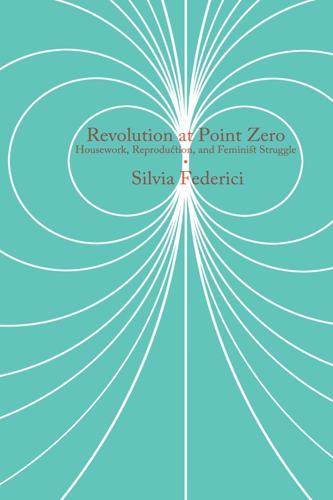
Revolution at Point Zero: Housework, Reproduction, and Feminist Struggle
by
Silvia Federici
Published 4 Oct 2012
The creation of common/s, then, must be seen as a complement and presupposition of the struggle over the wage, in a context in which employment is ever more precarious, in which monetary incomes are subject to constant manipulations, and in which flexibilization, gentrification, and migration have destroyed the forms of sociality that once characterized proletarian life. Clearly, as I argue in Part Three, reappro-priating lands, defending forests from the loggers, and creating urban farms is only the beginning. What matters most, as Massimo De Angelis and Peter Linebaugh have so often stressed in their works and political activity, is the production of “commoning” practices, starting with new collective forms of reproduction, confronting the divisions that have been planted among us along the lines of race, gender, age, and geographical location.
…
This is not a utopia, but a process already under way in many parts of the world and likely to expand in the face of a collapse of the world financial system. Governments are now attempting to use the crisis to impose stiff austerity regimes on us for years to come. But through land takeovers, urban farming, community-supported agriculture, through squats, the creation of various forms of barter, mutual aid, alternative forms of healthcare—to name some of the terrains on which this reorganization of reproduction is more developed—a new economy is beginning to emerge that may turn reproductive work from a stifling, discriminating activity into the most liberating and creative ground of experimentation in human relations.
…
The consequences of the globalized world economy would certainly have been far more nefarious except for the efforts that millions of women have made to ensure that their families would be supported, regardless of their value on the capitalist labor market. Through their subsistence activities, as well as various forms of direct action (from squatting on public land to urban farming) women have helped their communities to avoid total dispossession, to extend budgets and add food to the kitchen pots. Amid wars, economic crises, and devaluations, as the world around them was falling apart, they have planted corn on abandoned town plots, cooked food to sell on the side of the streets, created communal kitchens—ola communes, as in Chile and Peru—thus standing in the way of a total commodification of life and beginning a process of reappropriation and recollectivization of reproduction that is indispensable if we are to regain control over our lives.

Pivot: The Only Move That Matters Is Your Next One
by
Jenny Blake
Published 14 Jul 2016
A person who aims for learning and contribution may rank intellectual capital over financial capital if pressed to choose, but often ends up wealthy in both. Take Christian Golofaro and John Scaife, who traded coffee and cotton in the open outcry pits on Wall Street for five years. Tired of the daily pressures of their jobs and looking for meaning beyond buying and selling commodities, they pooled their money in 2014 to start an urban farming business in Red Hook, Brooklyn. They sought to help revolutionize food production by bringing fresh, local, pesticide-free produce to New York City year-round. They were more inspired as impacters in their new business, SpringUps, than they ever were in finance. Though he spent thousands of hours in high school and college preparing for a career in medicine, Travis Hellstrom decided to join the Peace Corps after graduation instead.
…
Even if you declare your launch successful, given impacters’ innate drive for growth and challenge, you may want to continue piloting soon afterward. Christian and John, who you met in the High Net Growth chapter, pivoted from working as commodities traders in the open outcry pits to running their own urban farming business, SpringUps. They pooled their money to purchase two shipping containers that were repurposed as hydroponic growing facilities, rented a parking space in Red Hook, Brooklyn, and started growing basil. Soon after, they brought me on as a consultant to help with operations and communications, and I got a front-row seat to watch and help their pivot unfold.
…
It also lowered his risk profile; Christian got engaged shortly after shuttering SpringUps, and deliberately sought a job that would help him create more stability before getting married and starting a family. Neither of them have regrets about their entrepreneurial pivot. They enjoyed learning about urban farming and the food scene in New York City, and decompressing from the intensity of commodities trading. The SpringUps venture helped John and Christian identify next career moves that were even more aligned. They see their launch as a success even though they changed direction after two years. Both recognize their careers will be ever shifting from this point forward, fluid enough to meet their growth-oriented lives.
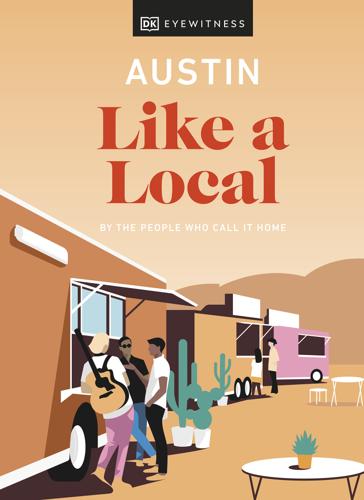
Austin Like a Local
by
DK
When he’s not pursuing his career in food photography, he can usually be found on one of Austin’s many bike trails, trying out the latest taco trucks, or hosting Malaysian pop-up dinners around town. JESSICA DEVENYNS As they say, although she wasn’t born in Texas, she got there as fast as she could. Jessi enjoys hiking through the beautiful Hill Country greenbelts, languishing away afternoons on patios with a coffee in hand, and learning to grow green things on urban farms. JUSTINE HARRINGTON Travel writer Justine moved to Austin to be with her people: rescue dog-loving outdoor enthusiasts and live music fans. She enjoys volunteering with Austin Mutual Aid and rallying for progressive causes. In her downtime, you’ll probably find her browsing the city’s indie bookshops.
…
Based in a 50s drugstore once run by Doc Young (Austin’s first African American pharmacist), the exterior is pretty pastel green, while inside is replete with pentagon-patterned flooring and wooden cabinets lined with vintage medicine bottles. And although many East Austinites take visiting friends and relatives here for the setting alone, they keep coming back for the farm-to-table twists on breakfast classics. Think Wasabi Bloody Marys and buttermilk pancakes topped with seasonal fruit from Eastside Urban Farms. Wes would approve. g Breakfast and Brunch g Contents Google Map LAUNDERETTE Map 2; 2115 Holly Street, Holly; ///dweller.relating.riddle; www.launderetteaustin.com Housed in – you guessed it – a former laundromat, Launderette is one of the hottest spots for brunch on the East Side. Inside, there isn’t a washer or dryer in sight (although the industrial ceiling and linoleum floor are unchanged from its washateria days).

City on the Verge
by
Mark Pendergrast
Published 5 May 2017
Atlanta offers diversity in all senses of the word. It is a troubled, dynamic, appealing, contradictory city, and the BeltLine project has the potential to envelope it with a livable new urbanism where people can walk and bike, enjoy parks, and get around on streetcars (or bus rapid transit) and rapid transit. The BeltLine will link to new urban farms whose fresh food can contribute to better health, along with an active lifestyle. As an Atlanta native with a profound personal involvement with the city, I now live far away in northern Vermont. Yet I have continued to monitor the problems and progress of my birthplace through the years as I have returned to visit family and friends, as well as to research two other Atlanta-related books (For God, Country, and Coca-Cola and Inside the Outbreaks).
…
Continental Wingate renovated and painted buildings and, along with three dozen partner organizations, including Coca-Cola, contributed to other enhancements. And the effort continued, stretching into the years of Boulevard, with more summer camps and museum visits for kids. In 2014, residents began the Boulevard Food Co-op, where a $5 joining fee and $3 biweekly payments purchased forty pounds of food every two weeks, much of it grown at local urban farms. And in 2015, Wingate broke ground on a four-story “City Lights” building for eighty low-income senior apartments at the corner of Boulevard and Angier, where two apartment buildings had burned in 2005. The city of Atlanta approved $7.5 million in tax-exempt bonds to help fund construction. Saving Sweet Auburn Freedom Parkway really divides the Old Fourth Ward into two distinct neighborhoods, with the southern half resting on Auburn Avenue.
…
As noted in the prologue, I couldn’t imagine that it would ever be livable, but he moved into the renovated home two years later, complete with a mailbox shaped like a caboose, on Lexington Avenue facing the park. His backyard abutted the BeltLine, where the Westside Trail broke ground late in 2014. Just across the corridor was the BeltLine Urban Farm, where Andy Friedberg and Andrea Ness were struggling to renew the soil on the former Harmon Brothers bus repair site.* Poventud’s enthusiasm and multiple contacts helped turn Adair Park into one of the more desirable neighborhoods on the southwestern side of town, as he attracted friends and acquaintances to fix up derelict homes, though 10 percent remained vacant.
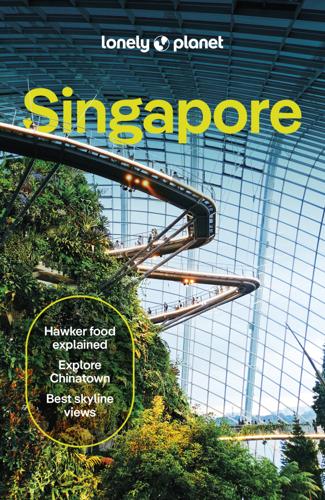
Lonely Planet Singapore
by
Lonely Planet
Published 14 May 2024
The reality is that Singapore relies heavily on imports for more than 90% of its food, making it susceptible to potential shortages and price fluctuations. To address this vulnerability, the Singaporean government has devised a '30 by 30' strategy, which aims to see 30% of the island's nutritional requirements produced locally and sustainably by 2030. This approach focuses on enhancing fruit and vegetable production through urban-farming initiatives. These include hydroponic farms atop buildings, local neighbourhood farms, and indoor multistory LED vegetable farms Singapore's tech industry is playing a pivotal role in advancing alternative-protein projects, and aims to position the country as a global leader in this field. The government is also fostering innovation and entrepreneurship in the sector, and at least 36 alternative-protein companies based in the city have collectively raised more than US$213 million in funding.
…
kaiwut niponkaew/shutterstock © FOUR-PILLAR SUSTAINABILITY Singapore has been certified as a sustainable destination based on the Global Sustainable Tourism Council’s Destination Criteria, which assess performance in four pillars: sustainable management, socio-economic sustainability, cultural sustainability and environmental sustainability. Cook Local Dishes Join legendary home chef Mummy Soh’s cooking classes at One Kind House. Its farm-to-table concept will teach you all about urban farming technologies, and you’ll harvest organic produce before learning to create delightful dishes. Grab a Green Grab Ride-sharing app Grab allows riders to prioritise cleaner-energy vehicles for their booking and reduce their carbon footprint by donating 10 cents for each ride to the Green Programme, which funds forest-protection and solar-energy initiatives.
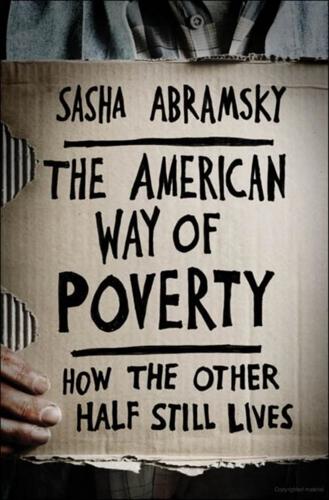
The American Way of Poverty: How the Other Half Still Lives
by
Sasha Abramsky
Published 15 Mar 2013
And we shouldn’t have a society that has a president who envies or creates class warfare or envy between one group of people and another. We should celebrate like we do in the small towns all across America—as you do here in Detroit.”23 How were Detroiters celebrating America’s economic buoyancy in 2012? By increasingly resorting to small-scale urban farms to avoid hunger. By arguing over Mayor David Bing’s desperate proposal to declare largely abandoned swaths of the city beyond municipal limits and thus to withdraw basic services such as street lighting and police protection from those areas, as well as close to half of the public schools within its district.
…
See also National debt Deepwater Horizon oil spill, 157–159 DeFazio, Pete, 246–247 Delaware, 149 Delaware Valley, 126–127 Delgada, Vicenta, 124–125 Delphi, 312 DeMint, Jim, 48 Democracy, 11–12, 326–237 Democrats, congressional, 103, 113, 135. See also individual members of Congress Dental health, 145 Detroit, 10, 127–129 Focus: Hope, 307–309, 320–321 urban farms in, 128–129, 185, 266 Diaz, Maribel, 48 Dickens, Charles, 70 Dickerson, Gloria, 111–113 “Different Anti-Poverty Programs, Same Single-Mother Poverty” (Albelda), 218 DiMause, Neil, 222 Dimon, Jamie, 36 Disabilities, 113–114, 115–116 Disability insurance, 124–125, 304–306. See also Social insurance Domestic workers, 37, 297–298 DREAM Act, 92 Drew, Mississippi, 111–113 Drug tests, 135–136 Durham, North Carolina, 282 Dysfunction, 138–144 Earned Income Tax Credit (EITC), 202, 207, 219, 233, 287–294, 295–296 and dual-income households, 300–301 and minimum wage, 299–300 See also Taxes; Wages, low East River Development Alliance, 108 Eastern Kentucky, 131–132 Economic downturns, 217–218, 218–220 Economic inequality, 6, 8–9, 31–33, 36, 40, 51, 84–88, 197 highest levels of, 102–103 and opportunity, 53 Economic injustice, protests against, 35–38.
…
Chamber of Commerce), 31–32 Taxes, 12, 81–82, 88, 199, 207, 244–248, 264, 266 and anti-government, anti-tax rhetoric, 13, 51–53, 69, 70 cuts in, and the wealthy, 207 and energy policy, 210–211 flat tax, 288 increase in, and the wealthy, 39–40, 82, 287–288 payroll tax, 29, 72–73, 135, 200–201, 257–259, 303, 316 and Republicans, congressional, 149 and tax code, changes in, 82, 201, 219–220, 248, 263, 288, 295, 298 and welfare system, history of, 68–69 See also Earned Income Tax Credit Taxing the Poor (Newman and O’Brien), 220 Tea Party, 47, 73, 180 Temporary Aid to Needy Families (TANF), 45, 52, 105–108, 110, 148, 206, 217, 218–219, 222, 299 Tennessee, 106 Tennessee Valley Authority, 202 Texas, 103, 106, 131, 177, 180–183 food insecurity in, 179, 181–182 A Theory of Justice (Rawls), 31 Toynbee, Arnold, 71 Trade unions, 82–84, 177–178, 180, 182, 247, 297–298 Trejo, Javier, 261 Truman, Harry, 72–73 Tucson, Arizona, 169–170 Tulare County, California, 99 211 hotline, 229 Unemployment insurance, 28, 29, 30, 135, 201. See also Social insurance United Airlines, 312 Urban farms, in Detroit, 128–129, 185, 266 Urquiaga, Angela, 60 U.S. Basic Income Guarantee Network, 249 U.S. Chamber of Commerce, 52, 178, 179, 180, 205 Task Force on Economic Growth and Opportunity, 31–32 U.S. Department of Commerce, 253 U.S. Department of Education, 47 U.S. Department of Health and Human Services, 253 U.S.

The Nation City: Why Mayors Are Now Running the World
by
Rahm Emanuel
Published 25 Feb 2020
And then we opened an entrepreneur-focused shared kitchen in Garfield Park on the West Side of the city, called the Hatchery, where food and grocery-product entrepreneurs could come together to share ideas and resources, and connect with the city’s grocers to sell their new products in stores in the food deserts and beyond. We also rewrote our urban farming policy to copy Milwaukee’s. This resulted in a dramatic increase in urban farms on former industrial sites in the city. From the international (James Beard) to the small neighborhood entrepreneur (like Justice of the Pie), we now have Chicago covered with the robust economic growth engine that is food. Woodlawn, once a neighborhood riddled with gang violence, will be near the future home of the Obama Presidential Library.
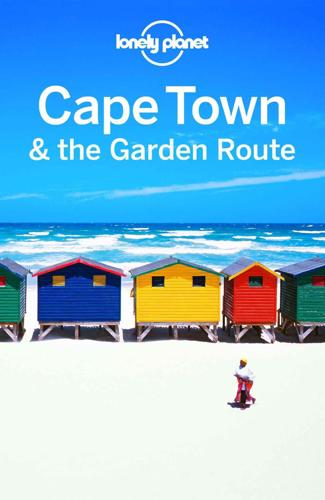
Lonely Planet Cape Town & the Garden Route (Travel Guide)
by
Lucy Corne
Published 1 Sep 2015
A drink or meal at institutions such as the Brass Bell pub or Live Bait restaurant – nearly as close to the splashing waters of False Bay as you can get without swimming – are fine ways to pass the time. 1Simon's Town & Southern Peninsula Kalk Bay THEGIFT777/GETTY IMAGES © What’s New Urban Farms & Farmers Markets The Mother City is proverbially going back to its historical roots with an emerging urban-farm movement. Leading the way is the Oranjezicht City Farm, with its associated Saturday farmers market, and the food-security activists Tyisa Nabanye, who have crafted a biodynamic market garden in Tamboerskloof, where they hold the Erf 81 Food Market on Sundays.
…
Nelson Mandela Gateway Learn about the Freedom struggle and life in the prison before heading to Robben Island. Parks & Gardens Company’s Gardens Stroll through these historic gardens, marvelling at ancient trees and pretty flower beds. Green Point Urban Park Enjoy the lovely eco-legacy of World Cup 2010 at this new park showcasing biodiversity. Oranjezicht City Farm A beautifully laid-out urban farm on the slopes of Table Mountain. Prestwich Memorial Garden Attractive city-centre space dotted with a collection of quirky sculptures and installations by Capetonian artists. Arderne Gardens The oldest collection of trees in the southern hemisphere is a lovely place to escape the crowds. Babylonstoren Explore the blissful garden of edible and medicinal plants at this elegantly reimagined wine and fruit estate.
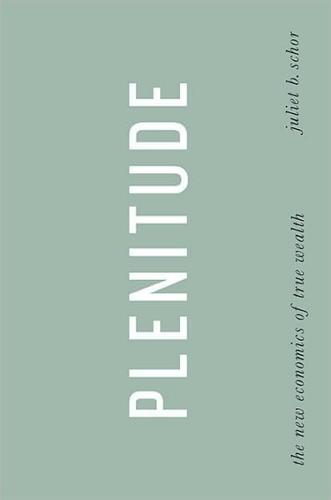
Plenitude: The New Economics of True Wealth
by
Juliet B. Schor
Published 12 May 2010
The French landscaper Patrick Blanc, who invented the Vertical Garden, has installed arresting plantscapes throughout Paris, and increasingly around the world. In comparison with conventional farming, they are highly efficient in their design and require less labor to sustain, thereby satisfying the principle of high-value activity. Urban farming is part of a larger movement called permaculture, which aims to revolutionize agriculture by mimicking nature’s inherent parsimony. Permaculture’s founders recognized that modern agriculture wastes enormous amounts of energy, because single-crop systems are unable to take advantage of synergies among species.
…
oceans: acidification of dead zones in overfishing of surface warming of oil -93n Old Navy one life living open-source movement organic farming overburden overshoot overwork Overworked American, The (Schor) paper Parthasarathi, Prasannan part-time work see also labor, hours worked trends in; unemployment, working hours reduction and passive solar design patents Peccei, Aurelio pensions permaculture permafrost Peru, health care in Petrini, Carlo pharmaceuticals phosphorus cycle physical capital physophilia Piore, Michael planetary boundaries plastics plenitude: basic lifestyle security and capital requirements of consumption and definition of Earth-smart design and ecological commons and economics of efficiency and green technology and knowledge and medium-term application of natural asset restoration and open-source mechanisms and principles of reciprocity and self-provisioning and sharing and slow spending and small businesses and social capital and -13n time allocation and trade-offs and -4n transition and true materialism and well-being and working less and Pollan, Michael pollution taxation of population aggregate growth and birth rates and food production and sustainability and world, growth of Post Carbon Cities network poverty prairies prices appliances and automobiles and carbon emissions and clothing and commodities and computers and department stores and durable goods and economic bubbles and energy efficiency and food and full-cost measurement of furniture and government subsidies and supply and demand and Princeton University production possibilities curve productivity agriculture and energy efficiency and Putnam, Robert-13n putting-out manufacturing rapid prototyping machines rebound effect dynamics of Recession, Great economic future and hours reductions in savings rate and recycling Rees, William Reinhardt, Uwe relative decoupling renewable energy see also specific types RepRap digital fabricator resources: extraction and consumption of nonrenewable types of restaurants retirement risk Rosnick, David Russia, historical carbon emissions of Sabel, Charles Sachs, Jeff Salomon, Shay savings, rate of Schneider, Stephen Schumacher College Schumpeter, Joseph sea-level rise self-provisioning agriculture and clothing and food and housing and technology and self-storage Sen, Amartya Senate, U.S., climate change and shadow wages Shafer, Jay Shandra, John Share the World’s Resources sharing economy Sheldon, Kennon Shiller, Robert Shiva, Vandana shrimp Simon, Julian Sky Trust proposal Slow Food movement Slow Money movement Slow Travel movement smart machines social capital - socialism social networking Social Security Society for Ecological Economics soil solar energy Spain, ecological footprint in stagflation Stanford University Stern, Nicholas Stern Review Stiglitz, Joseph Stockholm Environment Institute stock market storage stress substitution effect sulfur oxides Susanka, Sarah sustainability: affluence and BAU economy and community and-13n economics of environment and growth and household production and knowledge and multifunctionality and natural asset restoration and one planet living and path to population and self-provisioning and sharing and slow spending and small business and technology and time wealth and working less and Sustainable South Bronx Swan, Simone Sweden: ecological footprint in productivity growth in systems dynamics Tasch, Woody taxes, taxation carbon pricing and technology climate change reduction and - diffusion of economic change and household production and productivity growth and rebound effect and sustainability and time and see also green technology televisions environmental impact of storage and disposal of Thailand, health care in Thoreau, Henry David time, allocation of tool sharing trade, balance of trademarks trade-off economics - trains Transition Town movement transportation see also specific types of transportation travel true materialism Tumbleweed Tiny House Company underemployment unemployment aggregate growth and company size and working hours reduction and United Arab Emirates, ecological footprint in United Kingdom: ecological footprint in historical carbon emissions of hours worked in rebound effects in technological change in well-being and United Nations (UN) United States: clothing exports from clothing purchases in consumption as percent of GDP in ecological footprint in expansion of consumption in furniture imports to greenhouse gas emissions in Happy Planet Index of health care and historical profitability of hours worked in Human Development Index and income inequality in market growth of materials consumption in pensions in per capita income in rebound effects in sharing economy in technological change and well-being and urban farming urban homesteading value, monetized versus non-monetized forms of Velib Vertical Garden Victor, Peter Wackernagel, Mathis wages nonmonetized value and time wealth and Wal-Mart waste stream water privatization of water footprint Waters, Alice water stress Wealth of Networks, The (Benkler) weather see also specific types Wedgwood, Josiah Weisbrot, Mark well-being West, Paul Who Killed the Electric Car?

San Francisco
by
Lonely Planet
Local designers win pride of place on shelves, and killer sale racks put mall mark-ups to shame. (Loyal Army Clothing, Click here, the Haight) Shopping SABRINA DALBESIO / LONELY PLANET IMAGES © What’s New Urban Farming Recent reports rank San Francisco the greenest city in North America – but you could probably guess that with a glance at SF’s Green Festival urban farming programs or the beehive-covered freeway on-ramp at Hayes Valley Farm ( Click here ). For tips on growing your own organic food, farming for kids and urban composting (now mandated by law in SF), check out workshops at SF’s nonprofit sustainable gardening program, Garden for the Environment (www.gardenfortheenvironment.org).
…
Understand San Francisco San Francisco Today History Local Cuisine & Drinks Literary San Francisco Visual Arts San Francisco Music San Francisco Architecture Hills & Fog San Francisco Today Small as it is, this seven-by-seven-mile peninsula looms large in the imagination. The greenest city in America is full of ideas, including urban farms, biotech and social media – plus a lot more that mostly serve as in-box filler. Saloons, food trucks, pop-ups and pot clubs are sprouting up all over SF’s 43 hills, while same-sex couples are still on standby, waiting to get hitched. SF has its ups and downs, but as anyone who’s clung onto the side of a cable car will tell you, this town provides one hell of a ride.

San Francisco
by
Lonely Planet
Local designers win pride of place on shelves, and killer sale racks put mall mark-ups to shame. (Loyal Army Clothing, Click here, the Haight) Shopping SABRINA DALBESIO / LONELY PLANET IMAGES © What’s New Urban Farming Recent reports rank San Francisco the greenest city in North America – but you could probably guess that with a glance at SF’s Green Festival urban farming programs or the beehive-covered freeway on-ramp at Hayes Valley Farm ( Click here ). For tips on growing your own organic food, farming for kids and urban composting (now mandated by law in SF), check out workshops at SF’s nonprofit sustainable gardening program, Garden for the Environment (www.gardenfortheenvironment.org).
…
Understand San Francisco San Francisco Today History Local Cuisine & Drinks Literary San Francisco Visual Arts San Francisco Music San Francisco Architecture Hills & Fog San Francisco Today Small as it is, this seven-by-seven-mile peninsula looms large in the imagination. The greenest city in America is full of ideas, including urban farms, biotech and social media – plus a lot more that mostly serve as in-box filler. Saloons, food trucks, pop-ups and pot clubs are sprouting up all over SF’s 43 hills, while same-sex couples are still on standby, waiting to get hitched. SF has its ups and downs, but as anyone who’s clung onto the side of a cable car will tell you, this town provides one hell of a ride.
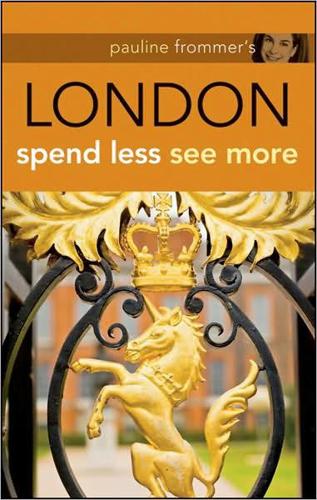
Pauline Frommer's London: Spend Less, See More
by
Jason Cochran
Published 5 Feb 2007
The bits in town wind through some fascinating brown-brick areas that, more than any other parts of central London, recall the river’s heyday as a center for trade and industry. Much of the route feels unofficial and is sometimes deserted, so bring along a map if you decide to sample a portion. URBAN FARMS England’s roots as a farming country go back thousands of years, and it must be hard to break Englishmen of the habit, because the city still maintains a number of urban farms. The main product being churned out these days isn’t milk or meat, but memories—city families come to let their kids pet the sheep, stare down the cows, and chill out in a field of green surrounded by sprawl.
…
James’s . . . . . . . . . . . . . . . . . . . . . 113 The City, Spitalfields & Whitechapel . . . . . . . . . . . . . . . 114 Southwark & Borough, including around Waterloo Station . . . . . . . . . . . . . . . . . . . . . . . . . . . 119 Victoria & Chelsea . . . . . . . . . . . . . . . . . . . . . . . . . . . 122 Kensington, Knightsbridge & Earl’s Court. . . . . . . . . . . . 122 Bayswater, Paddington & Notting Hill. . . . . . . . . . . . . . 124 Brixton . . . . . . . . . . . . . . . . . . . . . . . . . . . . . . . . . . 129 Fifteen Pubs You’ll Love . . . . . . . . . . . . . . . . . . . . . . . 129 5 Why You’re Here: The Sights of London . . . . . . . 133 How to Best Use Your Time . . . . . . . . . . . . . . . . . . . . . 133 The Ten Best: London’s Iconic Sights . . . . . . . . . . . . . . 135 Attractions That Ought to Be More Famous . . . . . . . . . . 154 Ten Tremendous Houses . . . . . . . . . . . . . . . . . . . . . . . 160 Attractions Where Londoners Take Their Families . . . . . . 168 Attractions with Niche Appeal . . . . . . . . . . . . . . . . . . . 172 Overrated Attractions You Can Skip . . . . . . . . . . . . . . . 189 Walking Tours . . . . . . . . . . . . . . . . . . . . . . . . . . . . . . 193 Hop-on, Hop-off Coach Tours . . . . . . . . . . . . . . . . . . . 194 The Thames by Ferry . . . . . . . . . . . . . . . . . . . . . . . . . 196 6 The “Other” London How How How How How Londoners Londoners Londoners Londoners Londoners . . . . . . . . . . . . . . . . . . . . . . . . 197 Work . . . . . . . . . . . . . . . . . . . . . . . . . 197 Learn . . . . . . . . . . . . . . . . . . . . . . . . . 204 Help . . . . . . . . . . . . . . . . . . . . . . . . . 208 Pray or Meditate . . . . . . . . . . . . . . . . . 209 Amuse Themselves . . . . . . . . . . . . . . . . 214 7 Outdoor London . . . . . . . . . . . . . . . . . . . . . . . . . . . . 219 Parks . . . . . . . . . . . . . . . . . . . . . . . . . . . . . . . . . . . . 219 Strolling the Thames . . . . . . . . . . . . . . . . . . . . . . . . . 226 02_308691-ftoc.qxp 12/23/08 9:14 PM Page v Contents v Urban Farms . . . . . . . . . . . . . . . . . . . . . . . . . . . . . . . 226 Sporting Events & Activities . . . . . . . . . . . . . . . . . . . . 227 8 Walkabouts . . . . . . . . . . . . . . . . . . . . . . . . . . . . . . . . . 231 9 London’s Best Shopping . . . . . . . . . . . . . . . . . . . . 262 Ten Great Shopping Streets . . . . . . . . . . . . . . . . . . . . . 262 Outlets & Sale Shops . . . . . . . . . . . . . . . . . . . . . . . . . 264 The Shopping Palaces. . . . . . . . . . . . . . . . . . . . . . . . . 265 Specialty Shops . . . . . . . . . . . . . . . . . . . . . . . . . . . . . 268 London’s Greatest Markets. . . . . . . . . . . . . . . . . . . . . . 280 10 London After Dark . . . . . . . . . . . . . . . . . . . . . . . . . . 284 Going to the Theater . . . . . . . . . . . . . . . . . . . . . . . . . 285 Other Audience Options: Divas, Conductors & TV . . . . . . 297 Free Museums That Party . . . . . . . . . . . . . . . . . . . . . . 300 Comedy Clubs . . . . . . . . . . . . . . . . . . . . . . . . . . . . . . 302 Cinema. . . . . . . . . . . . . . . . . . . . . . . . . . . . . . . . . . . 304 Dance Clubs, Music Clubs & the Bar Scene. . . . . . . . . . . 307 11 Seven Great Day Trips . . . . . . . . . . . . . . . . . . . . . . . 321 Windsor & Eton . . . . . . . . . . . . . . . . . . . . . . . . . . . . . 321 Bath . . . . . . . . . . . . . . . . . . . . . . . . . . . . . . . . . . . . 324 Oxford . . . . . . . . . . . . . . . . . . . . . . . . . . . . . . . . . . . 325 Cambridge . . . . . . . . . . . . . . . . . . . . . . . . . . . . . . . . 327 Canterbury . . . . . . . . . . . . . . . . . . . . . . . . . . . . . . . . 329 Stonehenge & Salisbury . . . . . . . . . . . . . . . . . . . . . . . 330 Stratford-upon-Avon . . . . . . . . . . . . . . . . . . . . . . . . . 331 12 The Essentials of Planning. . . . . . . . . . . . . . . . . . . 333 Where to Find Tourist Information . . . . . . . . . . . . . . . . 333 When to Visit . . . . . . . . . . . . . . . . . . . . . . . . . . . . . . 333 Entry Requirements for Non-British Citizens. . . . . . . . . . 340 Finding the Best Airfare to London . . . . . . . . . . . . . . . 340 Booking a Place to Stay . . . . . . . . . . . . . . . . . . . . . . . 342 02_308691-ftoc.qxp vi 12/23/08 9:14 PM Page vi Contents Travel Insurance—Do You Need It?
…
Because of mad cow disease, your Customs department now frowns upon visits to British farms in the countryside, so city farms (free of the disease) are your best bet for getting nose-to-snout with Britain’s famous agrarian culture. Farms can get muddy, so wear closed-toe shoes. The most popular urban farm is the free, 12-hectare (30-acre) Mudchute Park and Farm (Lower Isle of Dogs; % 020/7515-5901; www.mudchute.org; free admission; daily 9:30am–4:30pm; Tube: Mudchute DLR), which, within the incongruous sight of Canary Wharf ’s skyscrapers, stocks pigs, horses, cows, ducks, dogs, geese, and llamas; there’s also a short nature trail.
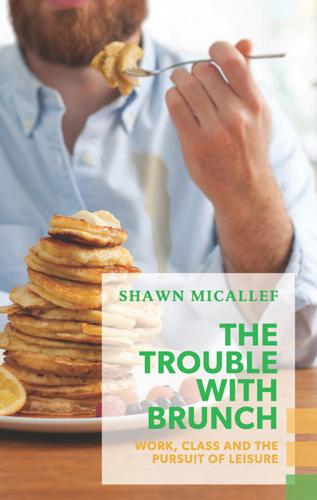
The Trouble With Brunch: Work, Class and the Pursuit of Leisure
by
Shawn Micallef
Published 10 Jun 2014
There’s a long tradition of markets in the city, and many city centres have very famous ones that are as much tourist attractions as they are places where locals shop. Many Canadian small towns started as marketplaces, and more than a few neighbourhoods in cities like Toronto began as market garden locations, where food was grown and sold in the city, a phenomenon that may be slowly returning, albeit in altered form, with the rise of urban farming. At the weekly Cabbagetown market, as at others like it, the ‘farmers’ are there too, selling the produce they presumably grew themselves in the nearby hinterland. The experience of meeting the person who grew the food about to be consumed is considered valuable, though it doesn’t change the taste or quality of the food.

Grow Green: Tips and Advice for Gardening With Intention
by
Jen Chillingsworth
Published 31 Mar 2021
A food recycler machine heats up food scraps until dehydrated and sterile, then grinds them into tiny pieces that can be directly added to soil just four hours later. If you don’t want to compost indoors, look to your local community instead. Check with your local authority to see if they offer a kerbside collection for food waste. Ask your local school, allotment, community garden or urban farm if they can accept donations of food scraps for composting. Look online for websites and apps that locate local businesses who will take your food waste for free and turn it into compost. It’s also useful to join a local zero waste group on social media as these are a great resource for lots of community projects.

Copenhagen Like a Local
by
DK
Bring your book and lounge on the lawn, while author Hans Christian Andersen and philosopher Søren Kierkegaard lie at rest nearby. If you want to feel really meta, why not read one of their tomes? IN A PAIR A sheepish stroll Alpacas and sheep might crash your date in Sydhavnstippen, but that’s part of this park-cross-urban farm’s charm. Take a stroll in the evening, when the light hits the water beyond the grass. FOR A CROWD Frisbee fun Bring the gang, a frisbee and a picnic to Valbyparken for a fun-filled afternoon on the disc golf course. g OUTDOORS g Contents Wonderful Walks For everyone from hardy hikers to Sunday strollers, weekends in Copenhagen are all about donning trainers, grabbing a takeaway coffee and striking out on a leisurely walk.
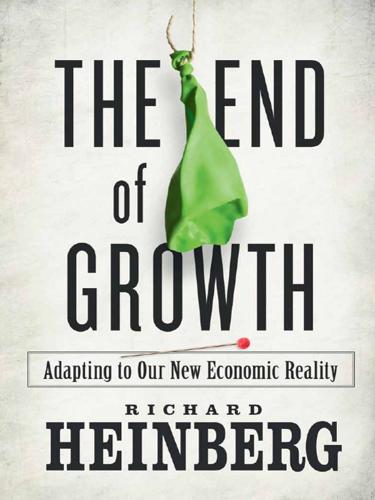
The End of Growth: Adapting to Our New Economic Reality
by
Richard Heinberg
Published 1 Jun 2011
Like a shopping mall, the CEL would be most successful if “anchored” by two or three substantial enterprises — such as a food co-op, community service organization, credit union, or transport co-op. One possible “anchor tenant” (or, in ecological terms, “pioneer species”) would be a Sustainable Commercial Urban Farm Incubator (SCUFI) program, designed to train aspiring commercial urban farmers, assist with startup financing, help secure land, and provide them with technical and business support.18 Uniform national “branding” of CELs would be much less important than each community’s sense of ownership of its unique, successful co-laboratory.
…
Colleen Kimmet, “Better Than A Food Bank,” Energy Bulletin, posted November 5, 2010; Mission Mountain Food Enterprise Center, mmfec.org. 16. Marcin Jakubowski, “Global Village Construction Set,” Make, Green Project Contest, makezine.com/tagyourgreen/detail.csp?id=95. 17. “The JAK Members Bank,” JAK Medlemsbank, jak.aventus.nu/22.php. 18. “Sustainable Commercial Urban Farm Incubator (SCUFI) Program,” VirtuallyGreen.com. 19. John Michael Greer, The Ecotechnic Future: Envisioning a Post-Peak World (Gabriola Island, BC: New Society, 2009), p. 76. 20. Dancing Rabbit Ecovillage, dancingrabbit.org. 21. Diana Leafe Christian, Finding Community: How to Join an Ecovillage or Intentional Community (Gabriola Island, BC: New Society, 2007) and Creating a Life Together: Practical Tools to Grow Ecovillages and Intentional Communities (Gabriola Island, BC: New Society, 2003); Communities: Life in Cooperative Culture Magazine, communities. ic.org; Global Ecovillage Network, gen.ecovillage.org. 22.

The Human Age: The World Shaped by Us
by
Diane Ackerman
Published 9 Sep 2014
Look up, and it looms four stories above you like an expansive forest understory, not a fairy-tale giant. Close in, it creates its own weather bubble and is quite shady and moist if you stand beside it and tilt up your chin at the dizzying vegetation. Balancing on a very thin wire between tame and free-willed, it seems both intimate and indomitable. VERTICAL GARDENS, LIVING roofs, and urban farms are going mainstream everywhere. A few of my favorites: Mexico City’s towering arches carpeted in fifty thousand plants astride car-clogged avenues; the blooming brocade of native plants adorning the inner walls of the Dolce Vita shopping center in Lisbon; the glassed-in courtyard of Milan’s Café Trussardi, where a canopy of frizzy greens and purples floats above diners and cocktail-sipping flaneurs, trailing vines and flowers like a hint of heaven; the golden wheatfield atop the Canadian War Museum in Ottawa; nine sinuous houses buried under earth and grass in Dietikon, Switzerland; the Grange, atop two buildings in the Brooklyn Navy Yard, where you’re surrounded by organic vegetables and views of the Hudson.
…
Cilantro, basil, chives, rosemary, and thyme scent the air. The sensory repast as well as the food nourishes greenhouse visitors, and the plants lap up the CO2 exhaled by the humans. Unlike typical greenhouses in winter, this one has no sunlight streaming through cathedral-like walls of glass. McMurdo’s urban farm at the bottom of the world is completely sealed and insulated, and, in a stark village where windows are precious, I’m told it also offers a leafy idyll for a dinner date. Even in this extreme outpost of a city, the benefits of greening ease the way. There will soon come a time when farming needn’t have a country flavor, and referring to “the north forty” means crops forty floors up.
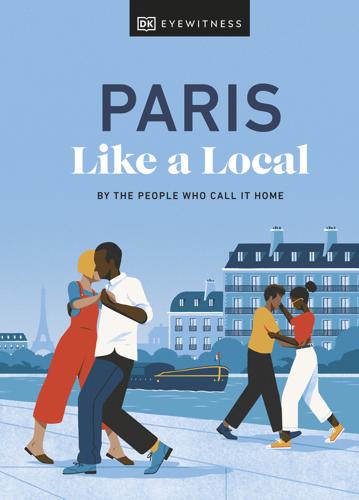
Paris Like a Local
by
Dk Eyewitness
g Community Projects g Contents Google Map LA RECYCLERIE Map 4; 83 Boulevard Orano, 18th; ///outreach.patting.chief; www.larecyclerie.com Okay, there are chickens, so you know what you’re getting into here. Everything at this former railway station is devoted to an eco-friendly ethos of reuse: an urban farm features a communal vegetable patch; seed swaps encourage community building; and a workshop lets people drop off items to be repaired in-house. Plus, if things are too broken to fix, the team find a way to give it new life – and teach you how to do it yourself next time. Zero waste may seem like a fantasy, but here, it’s become a reality. » Don’t leave without visiting the café to grab a coffee for yourself and one for someone in need (there’s a pay-it-foward scheme here).

Whole Earth Discipline: An Ecopragmatist Manifesto
by
Stewart Brand
Published 15 Mar 2009
The maids, nannies, gardeners, and security guards walk to work. The poor have time but no money, and the rich have money but no time; and so they deal. I find what needy people do with surplus time more interesting than what un-needy people do with surplus money. Ingenuity is the norm in the informal economy. For instance, there is a whole urban-farming subeconomy in the slums: Families save money and improve nutrition by growing their own food, and they can sell the produce a short distance from where it’s grown. In the Medellín slums in Colombia, “people raise pigs on the third-floor roofs and grow vegetables in cut-open bleach bottles they hang from their window sills,” according to blogger Ethan Zuckerman.
…
The new profession of urban ecology could unleash hordes of postdocs on everything from cockroach predation to urban disease vectors and help cities engage natural infrastructure with the same level of sophistication that is brought to built infrastructure. Every Green organization should have an urban strategy, and some should specialize in cities. One idea that could be transferred from squatter cities is urban farming. Another article in Science enthused:In a high-tech answer to the “local food” movement, some experts want to transport the whole farm—shoots, roots, and all—to the city. They predict that future cities could grow most of their food inside city limits, in ultraefficient greenhouses. . . . Well-designed greenhouses use as little as 10 percent of the water and 5 percent of the area required by farm fields. . . .

Exponential: How Accelerating Technology Is Leaving Us Behind and What to Do About It
by
Azeem Azhar
Published 6 Sep 2021
Historically, food needed to be transported from rural farms to urban centres. But the new technology of urban farming means this need not be the case. With their smaller footprints, farms can be closer to the mouths they feed – sometimes even in the city they serve. Montreal’s 160,000-square-foot Lufa Farms greenhouse, the world’s largest, sits directly on top of a distribution warehouse.8 A tennis court is less than 3,000 square feet; Lufa would easily fit 50 of those. The proximity of Lufa to its consumers allows for fresher product, cultivated for nutrition. And many urban farms are following this template: built close to the retailer, so that the tomato practically rolls from its vine into your shopping bag.
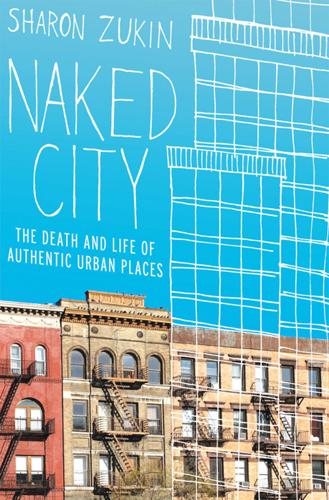
Naked City: The Death and Life of Authentic Urban Places
by
Sharon Zukin
Published 1 Dec 2009
Their modest means keep them dependent on the state, private foundations, and, indirectly, corporate sponsors. To stay active gardeners must know about and apply for external funding. Since the 1980s the New York State Department of Agriculture and nonprofit organizations that are dedicated to urban farming have paid for internships for local teens; planning how to get access to these funds, as well as coordinating a production network of compost suppliers, interns, and produce sellers, requires community gardeners to organize more intensively than when they only plant ornamental flowers or grow vegetables for individual use.
…
Increase in value: Ioan Voicu and Vicki Been, “The Effect of Community Gardens on Neighboring Property Values,” Real Estate Economics 36, no. 2 (2008): 241–83; lack of control, displacement: Daisy Hernandez, “A Bitter Harvest for the Losers; Some Ask Why Compromise Doesn’t Protect Their Gardens,” New York Times, October 12, 2002; foundations’ influence: Anne Raver, “Healthy Spaces, for People and the Earth,” New York Times, November 6, 2008; expire in 2010: Brigid Bergin, “Toward a Garden Truce, Fertile and Long-Lasting,” City Limits, June 18, 2007, www.citylimits.org. 18. Alex Schmidt, “Community Gardeners Now Covered by City Insurance,” Downtown Express, April 21–27, 2006; especially in Harlem: Schwartz, “Community Gardens,” and see chapter 2; urban farming: Jim Dwyer, “Sweat Equity Put to Use within Sight of Wall St.,” New York Times, October 8, 2008; Mark Winston Griffith, “The ‘Food Justice’ Movement: Trying to Break the Food Chains,” www.gothamgazette.com, December 2003; www.agmkt.state.ny.us/cg/CGHome.html; http://www.justfood.org/jf/. These farmers’ markets are not connected to the Greenmarket network of farmers’ markets described in chapters 3 and 4.

The Rough Guide to Amsterdam
by
Martin Dunford
,
Phil Lee
and
Karoline Thomas
Published 4 Jan 2010
There’s also a beauty salon, offering facials, waxing, body treatments and massage (daily noon–8pm). Kids’ Amsterdam With its canals, narrow cobbled alleys and trams, the novelty value of Amsterdam can prove entertaining enough for many kids aged six and above. There’s also a whole host of attractions specifically aimed at young children, ranging from circuses and puppet theatres to urban farms and one of the best zoos in Europe, with a Planetarium attached. There are also plenty of opportunities for play – practically all of the city’s parks and most patches of greenery have some form of playground, and the recreation area in the Vondelpark is heaven for kids and parents alike. You’ll find most places pretty child-friendly; the majority of restaurants have highchairs and special children’s menus, and bars don’t seem to mind accompanied kids, as long as they’re well behaved.
…
In the Amsterdamse Bos (www.amsterdamsebos.nl; see "The Amsterdamse Bos") you’ll find playgrounds, lakes, cycle paths and a nature reserve with bison and sheep, and you can also rent canoes and pedaloes to explore the waterways, or visit the Geitenhouderij Ridammerhoeve (March–Oct daily 10am–5pm, except Tues; Nov–Feb also closed Mon; 020/645 5034, www.geitenhouderij.nl), an enjoyable mini-farm with a herd of goats and their kids. The visitors’ information centre near the Bosbaan entrance has a kids’ area and exhibitions about the park. There are also plenty of urban farms dotted around the city – look in the phone book under Kinderboerderij for a full list. One of the best is the Artis Zoo Children’s Farm, which can be visited alongside a trip to the zoo itself; see "Artis Zoo" for details. Kids’ Amsterdam | Theatres, circuses and funfairs A number of theatres put on inexpensive (around €3–4) entertainment for children most afternoons.

Vulture Capitalism: Corporate Crimes, Backdoor Bailouts, and the Death of Freedom
by
Grace Blakeley
Published 11 Mar 2024
Akuno and his comrades started out by setting up a network of people’s assemblies that would feed into a People’s Task Force, which would initiate the proposals decided on by the assemblies.105 In 2009, the group helped elect Chokwe Lumumba to the local council, as well as leading successful campaigns to elect the first-ever Black sheriff of Hinds County, to resist cuts to the public transport budget, and pass antiracist legislation in the city.106 In 2017, Chokwe Antar Lumumba—Lumumba’s son—stood as the Democratic Party’s candidate for mayor of Jackson and won with 90 percent of the vote.107 The final pillar of the Jackson-Kush Plan—building a solidarity economy—relied on the construction of cooperative and community organizations from the ground up.108 Akuno’s vision included plans for housing cooperatives, credit unions, urban farms, agricultural cooperatives, land conservation trusts, and an expansion of public services. The organization occupied unused land to start a network of urban farms and farmers’ markets, which worked together to “promote a healthy diet, affordable produce, and food sovereignty in the city.” It also developed a campaign to expand worker organizing in the city with the aim of overturning anti-union legislation.
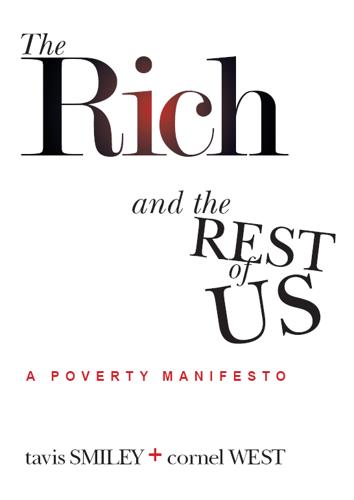
The Rich and the Rest of Us
by
Tavis Smiley
Published 15 Feb 2012
Let’s legitimize and legalize ways to cut through the red tape by developing a grassroots strategy that halts neighborhood decline and places people in vacant homes. 5. Universal Food Delivery System: No one, especially children, should go hungry in America. We need a food delivery system that ends hunger and food insecurity; promotes small regional farms; supports urban farming initiatives; and offers new employment opportunities through the growth, harvesting, and distribution of food. If we do this one right, America can demonstrate its ability to tackle and solve complex human problems. 6. Prisons & Mass Incarceration: Mass incarceration of minorities bankrupts the country; creates permanent, second-class citizenship; and locks formerly incarcerated individuals into on-the-street, economic concentration camps.
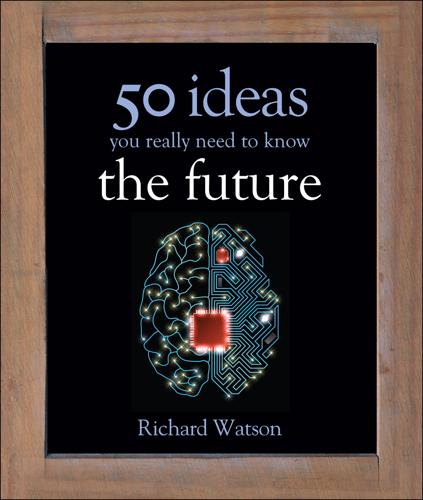
50 Future Ideas You Really Need to Know
by
Richard Watson
Published 5 Nov 2013
Equally, planning regulations mean that city governments can influence how buildings are constructed and how low-carbon and smart technologies are incorporated into large infrastructure projects. We’ll start to see more low-carbon building materials, increased investment in energy-efficient public transport, more carbon-neutral cities, locally farmed energy and vertical agriculture—literally tower blocks of urban farms that harvest their own power and water and grow food and animals up to 300m (1,000ft) in the air. The second factor shared by large cities: they act as magnets for human energy. They attract poor people with ambition and put them to productive use, which makes both individuals and cities richer overall.
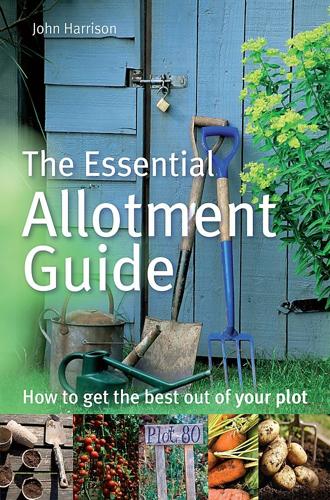
The Essential Allotment Guide: How to Get the Best Out of Your Plot
by
John Harrison
Published 14 Jun 2009
It only needs to be half the depth you wish to soak, remember, as you can upturn the post to soak the rest. 11 LIVESTOCK Keeping some livestock on the allotment is a very natural step from growing your own crops. I’ve seen everything from bees to horses kept on allotments but generally the most popular thing is to keep some hens. But before we go ahead and convert the plot into an urban farm, there are a few points to consider. Does your site actually allow you to keep animals? Sometimes this will be banned under the rules, in which case you need to try to get the rules changed. This can be an uphill task, but you do have an ally in the Government who recommend (in the Fifth Report of the House of Commons Committee for Environment, Transport and Regional Affairs in June 1998) allowing the keeping of livestock.
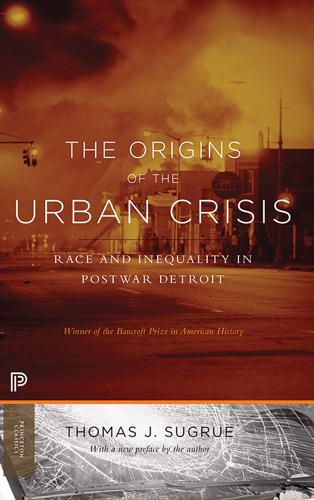
The Origins of the Urban Crisis
by
Sugrue, Thomas J.
Detroit’s most famous radical, Grace Lee Boggs, who took an ideological journey that began with Trotskyite factionalism, moved through Black Power, and shifted to neighborhood and anti-violence organizing, inspired a devoted band of utopians who envision Detroit as a collective of communal farms, the world’s largest wholly self-sustaining city. That vision of Detroit is a more than a little farfetched, but with at least 875 urban farms and community gardens in Detroit today, it is no more unreal than long-dashed dreams of somehow restoring the city’s mid-century industrial might.25 Since the 1950s, influential Detroiters have held hope for the reindustrialization of the city against ever worsening odds. Civic leaders have argued that because Detroit occupies a strategic location on the U.S.
…
France, ed., Handbook of Regenerative Urban Design (Boca Raton: CRC Press/Taylor and Francis, 2008), 189-204; Grace Lee Boggs with Scott Kurashige, The Next American Revolution: Sustainable Activism for the Twenty-First Century (Berkeley and Los Angeles: University of California Press, 2012), esp. 105-134. For a useful overview of urban farming in the city, see John Gallagher, Reimagining Detroit: Opportunities for Redefining an American City (Detroit: Wayne State University Press, 2010), ch. 3. 26. Bill Vlasic, “Last Auto Plant Brings Detroit Hope and Cash,”New York Times, July 15, 2013. 27. Richard Florida,The Rise of Creative Class Revisited(New York: Basic Books, 2012).
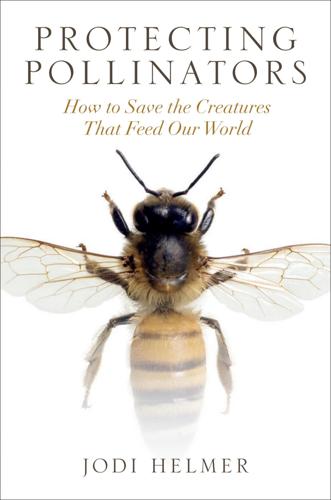
Protecting Pollinators
by
Jodi Helmer
Published 15 Nov 2019
Sanctuary City At the tip of Manhattan, across the harbor from the Statue of Liberty and Ellis Island, a popular public park provides refuge for tired and huddled masses of pollinators. The Battery (known to most New Yorkers as Battery Park) encompasses twenty-five acres and includes the Castle Garden Emigrant Depot, where eight million immigrants were welcomed into New York between 1855 and 1890 (before the Ellis Island Immigrant Inspection Station was built) as well as an urban farm and gardens. It’s also home to a bee sanctuary called BeeVillage. Like the immigrants who landed in New York a century ago, honeybees are foreigners that now call the United States home. European colonists brought the bees in during the 1700s—perhaps some arrived at ports in New York. The connection between the nonnative bees and the first waves of immigrants provides docents at the Battery Conservancy opportunities to talk about the risks facing these insect immigrants, such as environmental and climate change.

The Great Reset: How the Post-Crash Economy Will Change the Way We Live and Work
by
Richard Florida
Published 22 Apr 2010
New generations of young professionals and even some young families are moving back downtown into revitalized districts such as the city’s fabled Lafayette Park, a seventy-eight-acre development with an amazing mix of verdant open space and modern high-rises and town houses designed by one of the original “star-chitects,” Mies van der Rohe. Across the city, acre upon acre of once-useless vacant lots are being turned into vibrant urban farms. One writer even claimed that the city was turning into a veritable laboratory for innovative approaches to urban revitalization.17 So how long will it take Detroit or any other hard-hit Rust Belt city to come back? It’s a big question—for which there are no easy answers. Some cities are quite resilient: places like New York and London seem to be able to remake themselves endlessly.
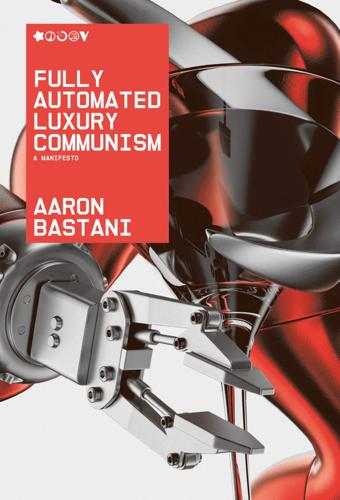
Fully Automated Luxury Communism
by
Aaron Bastani
Published 10 Jun 2019
Their whiskey is a different story, however, with the Washington Post describing how it had touches of liquorice and apple and tasted better than Pappy Van Winkle’s Twenty-Year-Old Family Reserve, one of the world’s most-prized bourbons. Besides the huge savings in labour, time, energy, land and water, synthetic biology will underpin a historic relocation of food production. Synthetic meat, which needs no sunlight, would appear to be a perfect candidate for vertical, urban farming, while the obvious savings with land come to fundamentally alter our relationship with nature. This could have a number of benefits including the re-wilding of vast wildernesses lost to deforestation and the Industrial Revolution – certainly of major use as carbon sinks in trying to mitigate climate change.

Age of the City: Why Our Future Will Be Won or Lost Together
by
Ian Goldin
and
Tom Lee-Devlin
Published 21 Jun 2023
Manhattan may well feel like a sea of skyscrapers, but roughly 70 per cent of buildings across the five boroughs are three storeys high or less.8 The repurposing of disused office buildings, industrial spaces and parking lots also offers a significant opportunity to increase housing supply in inner cities. Further densification would have the added benefit of freeing up space for more parkland and urban farms, making cities not only more pleasant but also more environmentally friendly. As cities go about densification, they should also expand their stock of social housing to help create more socioeconomically integrated communities. With the rapid increase in rental prices over recent decades, there are solid grounds for raising the threshold at which social housing can be accessed.
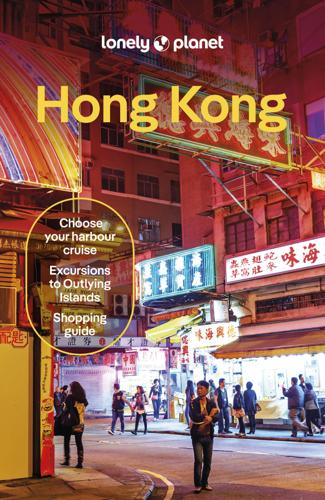
Lonely Planet Hong Kong
by
Lonely Planet
Walk or Take Public Transport Hong Kong’s MTR, trams, ferries and buses are more energy-efficient forms of transport than taxis and ride-hailing services. The Central–Mid-Levels Escalator is usually faster than taxis or buses when going from downtown Central up into Soho. Discover Urban Rooftop Farming Rooftop Republic (rooftoprepublic.com) has built and managed over 80 urban farms in Hong Kong. The social enterprise also organises regular community events on organic farming and sustainable living. Housed in the Old Tai Po Police Station, Green Hub (greenhub.hk) serves locally sourced New Territories food from its Eat Well Canteen, organises cooking classes and heritage tours, and has an eco-guesthouse and co-op shop.
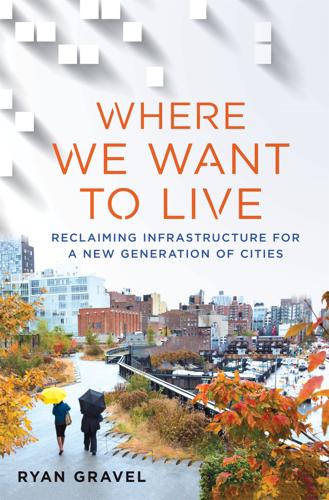
Where We Want to Live
by
Ryan Gravel
Published 2 Feb 2016
What might have been farmhouses that dotted the landscape were actually lonely reminders of the thousands of buildings that once stood there cheek by jowl to support Detroit’s roaring economy. Temple Street at 16th Street, Detroit. (Ryan Gravel, 2011) The bird’s casualty was either a symbol of nature truly reclaiming this city or of urban farming gone awry. Either way, it got me thinking about the generators of city identity. Automobiles were the defining mobile devices of yesterday. Today, the constant flow of information and communication from the devices in our pockets is producing seismic shifts in the way we think about and construct the world around us.

The Locavore's Dilemma
by
Pierre Desrochers
and
Hiroko Shimizu
Published 29 May 2012
The Big Questions (August 23) http://www.thebigquestions.com/2010/08/23/loco-vores/. 27 Steven Sexton. 2009. “Does Local Production Improve Environment and Health Outcomes?” ARE Updates 13 (2): 5-8 http://giannini.ucop.edu/media/are-update/files/articles/v13n2_2.pdf. 28 Edward L. Glaeser. 2011. “The Locavore’s Dilemma: Urban Farms Do More Harm than Good to the Environment.” Boston.com (April 16) .http://articles.boston.com/2011-06-16/bostonglobe/29666344_1_greenhouse-gas-carbon-emissions-local-food. 29 Jayson L. Lusk and F. Bailey Norwood. 2011. “The Locavore’s Dilemma: Why Pineapples Shouldn’t be Grown in North Dakota.”
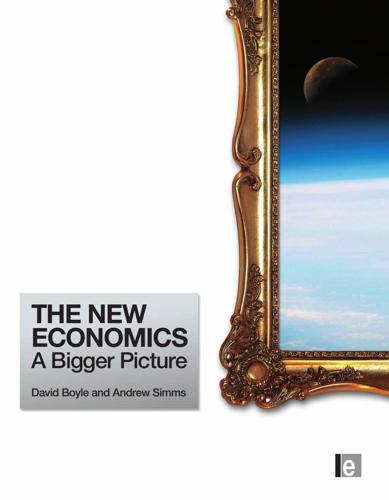
The New Economics: A Bigger Picture
by
David Boyle
and
Andrew Simms
Published 14 Jun 2009
Before its local oil shock, Cuba had investigated forms of ecological farming far less dependent on fossil fuels, and had in place a system of regional research institutes, training centres and extension services to support farmers. At the heart of the transition was the success of small farms, and urban farms and gardens. State farms later followed their example. Immediate crisis was averted by food programmes that targeted the most vulnerable people – the old, young, pregnant women and young mothers – and a rationing programme that guaranteed a minimum amount of food to everyone. Soon half the food consumed in Havana was grown in the city’s own gardens and, overall, urban gardens provide 60 per cent of the vegetables eaten in Cuba.2 The threat of serious food shortages was overcome within five years.
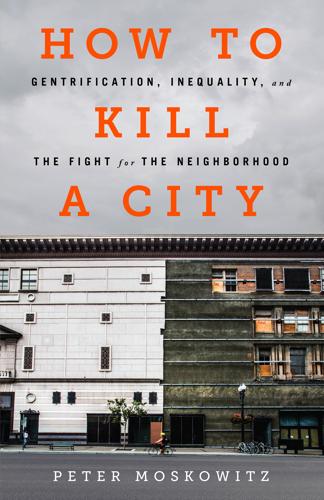
How to Kill a City: The Real Story of Gentrification
by
Peter Moskowitz
Published 7 Mar 2017
: Why Taxpayers Are Losing—Again—in Detroit,” Next City, March 3, 2014. The city also awarded Marathon Petroleum $175 million: Joe Guillen, “$175M Tax Break for Marathon Refinery Buys Detroiters Only 15 Jobs,” Detroit Free Press, March 14, 2014. the mayor’s office sold 140 acres of public land: John Gallagher, “Council OKs Sale of 1,500 Lots for Urban Farming Project,” Detroit Free Press, December 11, 2012. Michigan gives away 30 cents of every government dollar: Louise Story, “The United States of Subsidies,” New York Times, December 3, 2012. A bill introduced in the state’s legislature would ban: Ryan Felton, “House Bill Would Ban Detroit from Enacting Community Benefits Agreement Ordinance,” Detroit Metro Times, December 4, 2014.
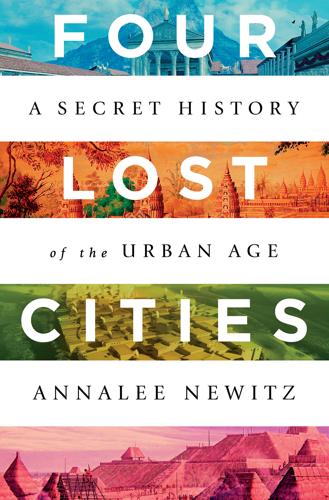
Four Lost Cities: A Secret History of the Urban Age
by
Annalee Newitz
Published 2 Feb 2021
Tribes scattered across the Midwest, she writes, share the same words for “corn, gourds, squash, pumpkins, beans, cultivation, plant processing, cooking preparations, and the bow.” This suggests the groups had a common origin, roughly around the time of the Woodland peoples who first started cultivating these crops. Those Woodland people followed the call of a great revival, and settled at Cahokia to build an urban farming society before eventually moving on again. Other evidence of the Cahokia-Siouan connection comes from pieces of art found at Cahokia. Many figurines and paintings depict a figure who resembles the Siouan hero Red Horn, named for his plaited hair, dyed red and sticking up from the back of his head like a horn.
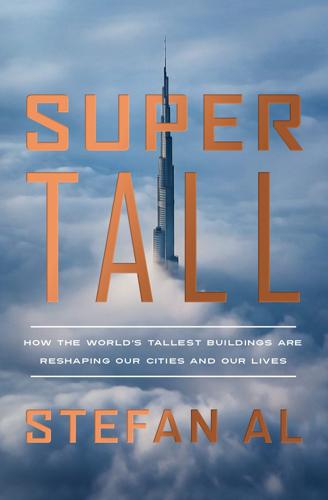
Supertall: How the World's Tallest Buildings Are Reshaping Our Cities and Our Lives
by
Stefan Al
Published 11 Apr 2022
Urban sprawl erases more farmland every year—we are losing an area as large as Denmark annually, with much of it in Asia.42 Already, restaurateurs and homeowners are pruning herbs, greens, and small fruits on the sides of buildings. Vertical gardens may even be coming to your high-rise apartment soon. Next time you need a clump of basil, you may be able to extend your hand from your apartment window, and pick from trellises or revolving trays. Or there could be entire skyscrapers dedicated to urban farming, so-called farmscrapers. Other builders care less for the largest amount of vegetated areas than they do the number of species in their skyscrapers. The architect Jean Nouvel collaborated with a botanist to create One Central Park in Sydney. This glass skyscraper is checkered with patches of vegetation that house 250 native Australian flowers and plant species.
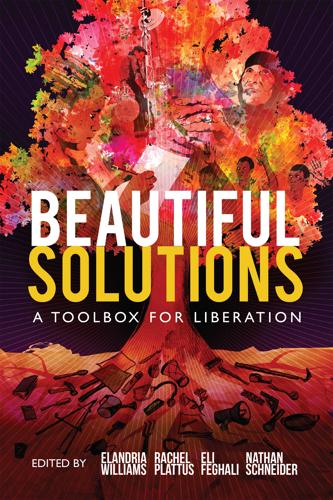
Beautiful Solutions: A Toolbox for Liberation
by
Elandria Williams, Eli Feghali, Rachel Plattus
and
Nathan Schneider
Published 15 Dec 2024
There, the Declaration of Nyéléni establishing a definition of food sovereignty was written and signed by representatives from over 80 countries. From the beginning, the concept was political. Then and now, it challenges widespread trade and agricultural policies, as well as the powerful interests that benefit from them. WRITTEN BY EMI DO Do is owner-farmeroperator of a small urban farm in Vancouver, Canada, and co-founder of FarmCity Co-op, a producer cooperative of urban farmers. She holds a PhD in agricultural economics from Tokyo University of Agriculture, where she studied large-scale cooperatives in Japan. There are many examples of initiatives that show us what food sovereignty looks like.

I Never Knew That About London
by
Christopher Winn
Published 3 Oct 2007
THE WATERMAN’S ARMS, a short walk away in Glenaffric Avenue, posed as The Governor General pub in the 1980 film The Long Good Friday starring Bob Hoskins. Nearby is the pleasant green space of MUDCHUTE, so named because this is where the chute deposited the mud dredged out during the building of the Millwall Docks. Mudchute Farm in the north of the park is THE LARGEST URBAN FARM IN BRITAIN. Blackwall To a New World THE RIVER WALL along the eastern side of the Isle of Dogs was once painted black, hence the name Blackwall. The BLACKWALL TUNNEL, built by Sir Alexander Binnie, was THE LONGEST UNDERWATER TUNNEL IN THE WORLD when it opened in 1897. A second bore was opened in 1967.
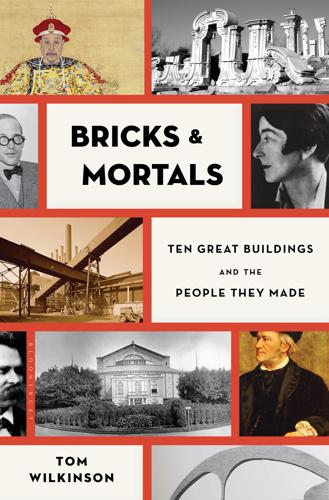
Bricks & Mortals: Ten Great Buildings and the People They Made
by
Tom Wilkinson
Published 21 Jul 2014
Louis-Ferdinand Céline, Journey to the End of the Night1 A day’s output of chassis at the Ford factory, Highland Park, August 1913 Detroit, once centre of industrial modernity – home of the production line; of Motown and techno, the music its rhythms inspired; and of that most dreamily American product, the car – lies ruined, a wasteland of abandoned buildings and vacant lots. Whole downtown blocks have been vapourised – as if the Cold War Soviets had actually hit an American target – and in their place urban farms have sprouted, offering a disturbing glimpse of the future of the West. Will we return to the land as post-industrial peasants, strip-farming among the strip malls? At its peak in the 1950s Detroit was the fourth-largest city in the States, with a population of two million, the highest national median income and the highest proportion of homeowners.
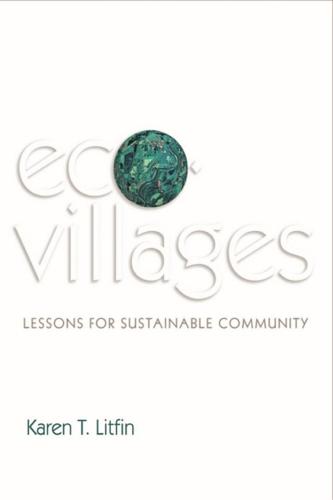
Ecovillages: Lessons for Sustainable Community
by
Karen T. Litfin
Published 16 Dec 2013
(Dr Ari) 28, 170 Arkin, Lois 30, 114–15, 143 art 8, 13, 58, 88, 119, 122, 138, 141, 183–4 Asia 12, 13, 15, 45, 71, 195 atheism 10, 150, 159, 162 atmosphere (Earth’s) 45, 113, 155, 169, 189 attunement 22, 128–9, 156 Auroville 10, 19, 27, 30–1, 38, 45–6, 63, 71, 88, 104, 114, 133, 137–40, 142, 150, 155, 177, 180–4 Auroville Village Action Group 181 Aurum earth-brick machine 46 Australia 13, 15, 26–7, 46, 53, 73, 181 Ba, Djibril (Jiby) 59, 72, 91 back-to-the-land 11, 22, 56 backyard 73, 97, 127, 189, 190, 205 backyard farm 97, 205 bacteria 29, 51, 60–1 Balde, Djibril 59 Bangladesh 107, 201 Barrel Cluster (Findhorn) 40 Bayer Corporation 199 beauty 25, 39, 47, 75, 78, 82, 89, 101, 108, 147, 163, 174–5, 205 bees 54, 74 belonging (sense of) 14, 30, 31, 136, 144, 146–8, 150, 152, 185 culture of 146–8, 152, 192 story of 185 Berlin 23, 64, 84, 86, 88, 177 Berry, Thomas 154–5 Berry, Wendell 170 Bible (New Testament) 163, 173 bicycle 1, 8, 27, 43, 63–7, 127, 192–4 Big Bang 154–5 bike trains 189 biodiversity 27, 71 see also wildlife biogeochemical cycles 201 biology 4, 25, 36, 51, 53, 57, 72, 135, 154, 159, 162, 163 birds 34, 73, 152, 155 Block, Peter 192 blocking (in consensus decision-making) 8, 41, 64–5, 117–19 Bokaer, Joan 54 Bott, Gabi 166 Brazil 13, 195 Brooks, Joss 181–3 Buddhism 28, 85, 149, 150, 151, 159, 162, 164, 165, 171, 177 building codes 40, 44, 53, 194 bus stop 24, 63, 131, 191 Business Alliance for Local Living Economies 89, 199 Caddy, Peter and Eileen 128, 156 Calera Creek Water Recycling Plant 194 California 6, 29, 43, 69, 74, 111–12, 166, 169, 194 car culture 27, 46, 62, 65–6, 145, 193 Camara, Lamin 90–1 Canada 197 capitalism 79, 88, 106, carbon dioxide 45, 71, 161 Caron, Paul 175–6 Carruba, Capra 16, 125 Catholicism 189 cell phones 70 cement 45, 116 charcoal 33, 72–3 Chennai 181–2 child-rearing practices 11, 17, 18, 24, 94, 111–12, 114, 116, 119, 133–8, 168, 191 children 8, 17, 21–2, 24, 30, 46, 66, 69, 85, 88, 94, 111, 114, 116, 119, 124–5, 127, 131–8, 140–1, 143–4, 147, 153, 163, 168, 180, 189, 193 absence of 30, 137 education of 23, 66, 88, 132, 140, 153, 163, 189 participation of in ecovillage culture 13, 134, 137, 143–5, 147 raised in ecovillages returning 116, 135–7 wellbeing of 24, 30, 46, 111–12, 116, 119, 127, 131, 147, 153 China 36, 59, 62–3, 193 choir 98, 138, 141, 145 Christian, Diana Leafe 113, 119, 206 Christianity (Christian) 149, 150, 151, 159, 162, 168, 185 circle of life 33–4, 74–7, 79, 109–11, 146, 148–9, 188, 202 circus 64, 88–9, 124 Cities for Climate Protection 194 citizenship 35, 49, 75, 92, 100, 122, 124, 136, 189, 202 City Repair 191 climate change 1, 5, 16, 34, 49, 50, 70, 75, 111, 130, 155, 161, 169, 172, 188, 190, 194, 195, 201, 204–5, 211 Club 99 (Sieben Linden) 43, 56–7, 70, 171 cogeneration 40, 49 co-housing 11, 21, 46–7, 93, 127, 207 Cold War 23, 88 collaborative consumption 34, 68–70, 92, 146 collective intelligence 175–9, 185 Colufifa 25–6, 31, 58–60, 66, 90–1, 105, 114, 120, 125, 150, 167–9, 196, 199 common house 17, 27, 43, 46, 50, 69, 70, 92–3, 97, 113, 127, 139, 143, 171 common property 69–70, 80, 92–4, 97, 191, 197, 199 Commoner, Barry 75 commons 191, 197, 199 see also common property commune 95–7, 127, 163 communication 18, 25, 78, 112, 119, 121–3, 125–8, 139, 147, 166, 174–5, 192, 201 communism 95, 106 community meals 70, 83, 162, 195 Community Sustainability Assessment 10, 132 Compassionate Listening 147, 192 complementary currency 99–103, 110 compost 5, 8–9, 32, 34, 54, 59, 128, 129, 137, 146–7, 207 composting toilet 15, 20, 41, 53, 61, 133, 147, 207 compressed-earth building 27–8, 46 conflict 11, 18, 106, 112, 114, 117–23, 137–8, 147, 150, 176, 205 conflict resolution 18, 106, 114, 137–8, 205 connection (sense of) 25, 69, 115, 123–4, 152, 155, 162–3, 166, 171 connectivity 185–6, 202–3 consensus 2, 6, 18, 20, 116–20, 125, 177, 180 consumerism 80, 97, 176 see also consumer society; overconsumption consumer society 15, 80, 92, 102 see also consumerism; overconsumption contraction and convergence 105 cooperative(s) 93, 100–2, 106, 191, 199 Copenhagen 133, 194 corporate lobbying 197–8 cottage industries 27, 87–8, 181–2 Council of Sustainable Settlements of the Americas (CASA) 200–1 courtyard 29, 46, 73, 84, 162 credito 100–3 crisis 3–4, 9, 11, 16, 18, 26, 36, 59, 108, 116, 120, 150, 153, 172, 176, 191, 203 ecological 1–5, 9, 11, 16, 150, 153, 172, 176 extinction 203 of meaning (existential) 150, 153 within ecovillages 18, 26, 108, 116–20 cult 115–16 currency (monetary) 12, 79–80, 98–103 da Silva, Arjuna 48 dairy 56, 83–4, 87 Damanhur 16, 18, 25, 30, 36–40, 42, 46, 57, 63, 87, 100–3, 115, 120, 122–5, 130, 133, 135–6, 150, 155, 157–60, 163, 171, 174, 177, 180, 183 Damanhur Crea 101 Dawson, Jonathan 11, 14, 68, 82, 124, 129, 130, 132 decision-making 17–18, 94, 116–17, 120, 135, 147, 177, 199 Dee, Bhavana 180–1 degrowth 196–7 democracy 66, 94, 106, 116, 117, 120, 177, 185, 188–9, 191, 193 Denmark 12, 22, 49, 92, 95, 97, 134, 197 dinosaurs 153, 155, 203–4 do-it-yourself politics 190 Dongtan (China) 193 downsizing 63, 105, 107, 197 drought-resistant plants 53 Duhm, Dieter 115–16 E2C2 30–5, 76, 80, 110, 151, 188, 191, 193, 195, 199, 203, 207 Earth community 76, 202 Earth System Governance 201 Earthaven 17. 20, 36, 38, 40, 43, 47–9, 53, 57–8, 77–8, 93, 100, 105, 108, 113–21, 129, 141, 150, 160, 165–6 Ecker, Achim 115 eco-home 42, 77, 108 ecological economics 196–7 ecological footprint 7, 21, 24, 26, 34–5, 43, 57, 68, 70, 73, 171, 183 ecology (defined) 34–5 eco-neighborhood 201 see also neighborhoods, sustainability practices in ecosystem 27, 34, 71, 74, 89, 109, 158. 182 ecovillage (defined) 3, 12 Ecovillage at Ithaca (EVI) 17, 21, 36, 41, 46, 50, 54, 63, 69, 83, 86, 93, 107–8, 111–14, 127, 138–9, 152, 194, 198 Ecovillage Design Education (EDE) 38, 132, 195 Ecovillage Network of the Americas 12 EcoYoff (Senegal) 179 Edinburgh 195 education 11, 12, 13, 19, 20, 23, 25, 67, 78, 89, 94, 119, 131–2, 135, 179, 181–2, 198 Effective Micro-organisms 29, 60, 182 efficiency 34, 36, 39–42, 64, 66, 81, 108, 121, 147 ego-village 42, 176 electric cars 36, 81 embodied energy 36, 42 energy 3, 20, 25, 27, 30, 34, 36, 38, 39, 40–5, 47, 48–9, 50–3, 58, 62, 63, 66, 69, 70, 74–5, 78, 82–3, 86, 88, 92, 99, 101, 111, 115, 122, 127, 130, 154–5, 156, 164, 176, 182, 183, 188, 189, 190, 193, 195, 197, 202, 205 cogeneration 40, 49 descent 70, 83, 92, 130, 189–90, 195, 202 fossil fuel 34, 42, 49, 51, 58, 62–3, 74, 92, 161, 167, 171, 192, 197, 200 micro-hydro 48 natural gas 48–9, 63 nonrenewable 5, 15, 49, 83 renewable 3, 38, 40, 48, 49, 63, 78, 82, 83, 88, 135, 156, 190, 197, 205 solar 9, 15, 25, 27, 28, 36, 40–5, 48–9, 63, 81–6, 101, 108, 111, 113, 133, 147, 183, 191, 193, 198, 205 wind 27, 48–51, 63, 73, 133 wood 33–4, 40–2, 48–9, 72, 141, 161 energy return on energy investment (EROEI) 62–3 engineer 43, 69, 84, 111 enlightenment (spiritual) 164, 183 entropy 155, 159 Estonia Ecovillage Network 179 Ethiopia 60 ethnic diversity 115, 155 Europe 4, 5, 12, 13, 15, 19, 26, 44, 49, 50, 55, 56, 58–60, 65–6, 105, 117, 122, 132, 163, 167–8, 178–9, 194, 197 European Union 5, 55–6, 189, 195, 198 evolution 3–4, 146, 148, 149, 152, 154–5, 157, 159–60, 162–3, 166, 175, 178, 185, 203–4 biological 3, 146, 154, 159, 161, 162, 166, 185, 203–4 cosmological 154–5, 159, 163 cultural 4, 148–9, 160, 166, 175, 188, 203–4 evolutionary intelligence 151, 154, 157, 163, 203 exponential growth 92, 102, 186 Falco (Oberto Airaudi) 25, 122, 158 Farmer, Chris 47–8, 58, 118, 141, 160 fermentation 141, 192 Field of Dreams (Findhorn) 42 Findhorn 12–13, 21–2, 30–1, 40, 42, 49, 51–2, 63, 68, 82, 89, 100, 115, 124, 128–9, 133, 138, 142, 150, 155–7, 177–8, 180, 194–5 Findhorn Consultancy Service 98 Findhorn Foundation 98 fish 58, 77–8, 90, 99,106, 188, 198 focalizer 22, 128, 156 forest (include forestry) 20, 33–4, 37, 55, 58, 71–2, 77, 90, 92, 116, 119, 125, 134, 162, 181, 183, 198 Forum (ZEGG practice) 24, 121–2, 132, 147, 192 fossil fuels 34, 42, 49, 51, 58, 62–3, 74, 92, 161, 167, 171, 192, 197, 200 freedom 6, 86, 95, 97, 121, 131, 178 friendship 6, 9, 42, 81, 108, 129, 134, 164, 185 frugality 51, 105 full-cost accounting 80–2, 189, 197–9 funeral 24, 144–5 Furuhashi, Michiyo 95, 176 Gaia 5, 31, 155–6, 163, 201 Gaia Education 10, 31, 132, 155, 190, 195, 198 Gaia Trust 12 Galle (Sri Lanka) 170–1 Gambia 35, 59, 90, 140, 167–8 Game of Life (at Damanhur) 124–5 Gandhi, Mahatma 81, 106 garbage 5, 9, 88–9, 194 Gateway Farm 57–8, 77, 108, 118, 160–1 GEN-Africa 200–1 gender relations 27, 72, 120, 126, 168 GEN-Europe/Africa 12 GEN-Oceania/Asia 12 genetically modified food 16, 25, 36, 54, 57 Germany 23–4, 33, 40, 44, 48–9, 56, 105, 115–16, 129, 143, 166, 177, 193, 197 gift economy 103–4, 147, 191–2, 199 Gilman, Robert and Diane 12 Gilmore, Jeff 69, 111–13, 138 global civilization 189, 200–2 global economy 12, 16, 34, 62, 79, 80, 82, 107, 109 Global Ecovillage Network (GEN) 10–12, 26, 38, 132–3, 179, 200–1 global governance 200–2 global inequality 35, 105, 167–9 global injustice 35, 169 globalization 12, 60, 63, 75, 107, 133, 139, 170, 186, 200–2 goat(s) 60–1, 207 God 61, 102, 136, 149–50, 164, 168–9, 173, 176, 182 Goura (Damanhurian) 57, 171 governance 18, 20, 28, 114, 116–17, 119, 120–1, 125, 134, 188, 190, 198, 200–1 government 72, 73, 83, 92, 94, 102, 106, 183, 190–1, 195–200 see also subsidies Great Depression 102 Great Reskilling 192 Great Unfoldment 152–61, 162–5, 172–4, 177, 178, 185, 186 green building 13, 36, 39–44, 45–8, 75, 175, 182 greenhouse gas emissions 45, 48, 62, 67–8, 71, 167, 169, 184, 193 see also carbon dioxide Greer, John 103 Groundswell Training Center 198 guesthouse 27, 117 guests in ecovillages 20–1, 23, 28, 40, 65, 68, 71, 87, 100, 117, 128, 132, 140, 144 see also visitors Gunambil (Sri Lanka) 106 Guneskoy Village (Turkey) 179 Halbach, Dieter 164 Hall of Metals (Damanhur) 158–60 Harris, Martha 93, 108 Hanover (Germany) 193 Hawken, Paul 200 Higa, Teruro 60 high school 8, 11, 77, 136 high-density building 46, 194 high-tech approaches in ecovillages 16, 25, 36, 40, 47, 113 Hinduism (Hindu) 149, 150, 151, 159 holistic approach 36–9, 126, 155, 166, 170 see also systemic thinking Hollywood 29, 65–7, 193 homeowners’ association 93, 191 Honduras 65 Høngsmark, Kirsten 96–7 horses 36, 56, 134, 143, 145 Hubble Telescope 188 Hübl, Thomas 177–9, 189 human excrement 8, 34, 182 human manure 33–4, 53 see also human waste; urine human subjects review 11 human waste 33–4 , 53, 182 hunger 10, 25–6, 31, 58–60, 69, 84–5, 97, 130, 141, 185, 196 hybrid cars 36 hyper-individualism 29, 185, 192, 193, 203 idealism 6, 17, 47–8, 86, 89, 99, 118, 120, 136 income (ecovillagers’) 16, 20, 22, 88, 95–6, 98, 101, 164; see also salary India 19, 27, 35–6, 57, 59, 62, 81, 140, 165, 169, 180–3 individualism 29, 46, 116, 176, 178, 185, 192, 193, 203 Indus Valley Restaurant 104 industrialized agriculture 105 infrastructure 35, 48, 51, 62, 63, 69, 86, 186, 194, 202 insulation 41–3 integrity 9, 80, 86, 149, 181, 201 intention (in ecovillages) 114–16, 123, 164, 207 see also purpose (sense of) intentional community 12, 93, 123, 164, 207 interdependence 4–5, 9, 17, 27, 28, 46, 49, 75, 79, 108, 117, 152, 184, 185–6, 199–202 ecological 4–5, 9, 36, 75, 108, 117, 184, 185–6 global (planetary) 4–5, 9, 27, 46, 75, 79, 117, 184, 185–6, 199–202 social 4–5, 9, 17, 36, 49, 117, 152, 184, 185–6 interest (monetary) 12, 17, 23, 35, 54, 76, 79, 80, 83, 100, 102–3, 112, 129 internal economy 64, 100 internalizing costs 197 see also full-cost accounting International Consortium of Local Environmental Initiatives 190 international institutions 189, 200 international law 3, 189, 194, 200 International Training Center for Local Authorities (CIFAL) 195 internet 12, 36, 64, 70, 99, 189, 191, 199, 201 interreligious sensitivity 149–50, 168 Isadon (Furuta Isami) 29, 61, 121, 172–3 Islam (Muslim) 26, 149, 150, 151, 159, 162, 168 Italy 16, 18, 25, 49, 100–2, 136, 157 Jackson, Ross 12 Japan 28–9, 60–1, 92, 94, 123, 172 jobs 79, 85–8, 96, 100, 111, 117, 166, 197 joining fee 93, 95 Judaism (Jew) 149, 159, 162 kibbutz 12, 13 Kibbutz Lotan (Israel) 179 Kidokoro, Yuki 84, 123, 143 Kitao, Koichi 60–1, 74 Kloster, Jørgen 55–6 Konohana 28–9, 60–1, 74, 92, 94–5, 121, 150, 155, 172–3, 176–7, 180 laboratory (ecovillage as) 13, 18, 27, 79, 86, 131, 149, 151, 164, 175, 180, 185–6, 205 LA County Bicycle Coalition 65 Læssø, Bø 55–6 Lagoswatte 28 laundry 46, 47, 50, 69 laws 25, 27–8, 93, 97, 106, 155, 170, 191, 197–9 learning author’s 2, 5–9, 13–16, 20, 39, 45, 67, 94. 102, 110, 141, 143, 153, 165, 168, 174–5, 179, 181, 205–7 from ecovillages 11, 14, 18–19, 60–1, 121, 131–4, 141–2, 147, 150, 187–204 in ecovillages 11, 14, 18–19, 28, 47, 51, 53, 60–1, 88, 108, 111, 113, 121, 131–4, 136–8, 147, 164, 177 legal and financial structure 92–7 lessons (from ecovillages) 9, 13, 15, 32, 69, 81, 110, 151, 187–204 libertarianism 190 Lietaer, Bernard 99–100 Lindegger, Max 26, 28, 84 linear model (economic) 33–4, 53, 75, 203 literacy 25, 106, 168, 181 Living Building Challenge 194 Living Machine 51–2, 194 living system 5, 53, 166, 173 Lizama, Jimmy 65–6, 193 localization 16, 54–5, 73–80, 84, 87–9, 97, 99, 110–11, 130, 141, 189–96, 198–9, 201–2 Los Angeles 13, 15, 29–30, 65, 67, 84, 93, 114, 150, 162, 193–4 riots in 30, 114–15 Los Angeles Eco-Village (LAEV) 29–30, 65, 67, 84, 93, 114–15, 123, 127, 137, 142, 150, 162, 193 Love, Brian 58, 77–8, 108 Lovelock, James 155 low-income housing 108 low-tech approaches in ecovillages 16, 36, 40, 47, 70 MacLean, Dorothy 156 Macy, Joanna 154, 165–6 magic 25, 124, 127, 159, 160–1, 163 malaria 25, 181 Marland, Angus 156–7 mass extinction 1, 75, 155, 172, 203 mass transit 23, 63–4, 66, 92, 127, 167, 206 Matrimandir (Auroville) 183–4 Mbackombel (Senegal) 198 meat 22, 25, 55–8, 83 medicine 59–60, 136 meditation 7, 25, 122, 128, 136, 151–2, 156–64, 165, 171, 177 Sarvodaya’s peace 151–2, 165 meetings 7, 17, 27, 46, 92, 95, 98, 105, 107, 112, 115, 117, 119, 120–1, 126, 132, 134, 138–40, 164, 172, 176–7, 179 membership process 22, 93–4, 96 microfinance 25, 59, 106–7, 168, 181, 185, 199 Middle America 21, 108, 194 Middle East 59, 197 Ministry of Ecovillages (Senegal) 198 misanthropic temptation 153 molecular biology lab 25, 36, 57 monasteries 11, 171 Monbiot, George 67–8 money 6, 8, 11, 13, 16, 49, 55, 77–80, 86–7, 98–103, 109–20, 140–1, 161, 168, 169, 180, 192, 198 see also currency (monetary); complementary currency monogamy 24, 115 Morrison, Lara 162 Mount Fuji 28, 172, 174 multinational corporation 112, 161, 200 music 8, 23, 86, 139, 142, 174–5, 185 see also song(s) Music of the Plants (Damanhur) 174–5 mysticism 115, 156, 162, 177, 183, 185 nation-state 117, 200 Nature-Spirit Community 126 Ndao, Babacar 198 neighborhood skills map 64, 70, 87, 192 neighborhoods 6, 21, 29, 32, 43, 54, 46, 50, 52, 56, 64, 67, 70, 87, 97, 108, 109, 110, 114, 138, 141, 146, 167, 171, 187, 188, 190, 191–6, 201, 205 sustainability practices in 80, 87, 97, 109–10, 114, 138, 141, 146, 188, 191–2, 205 New Age 21, 88, 162 New Rural Reconstruction Movement (China) 196 New York City 193 Nonviolent Communication (NVC) 112, 119, 123, 125, 147, 192 Nygren, Kristen 111–13, 138 Obama, Michelle, 199 oikos 74–5, 79 oneness 162, 186 organic food 2, 6, 9, 21, 29, 54–60, 73, 75, 81, 84, 87, 97, 128–9, 133, 191 overconsumption 4–5, 35, 36, 105, 107, 112, 167, 202 see also consumerism; consumer society Owen, David 193 ownership 11, 18, 64, 70, 80, 101–2, 92, 94, 97–8, 146, 199 Pacific Northwest 187 park (public) 73, 92. 97, 189 participatory development 10, 12 particle consciousness 178, 189 passive solar design 40–5, 48, 82, 108, 113 patriarchy 26, 115, 117, 120 Peace Contract with Animals (Sieben Linden) 24, 56 Peace Corps 198 peace movement 164 peak oil 5, 50, 62–3, 130 Pepe, Lucertola 174–5 permaculture 20, 26, 34, 36–9, 54, 58, 73, 75, 117, 162, 188, 195, 200, 205 personal growth 89, 113, 120, 148, 149, 175, 206 pets 73, 127 pioneer species 19 planetary citizen 189, 202 planetary interdependence 9, 27, 46, 186, 189 plants, communication with 162, 174–5 pocket neighborhood 194 policy making 189 polis 74–6, political activism 6, 11, 16, 23, 89, 133, 157, 164, 166 political science 35, 50, 85, 99, 116 politics 1–6, 35, 66, 88–9, 102–4, 113, 117, 129–30, 133, 141, 151, 157, 164–7, 189–90, 196 polyamory 23, 115 Portland (Oregon) 191, 193 postmodern 117, 125, 171 poultry 55, 58–61, 77, 84, 134, 168, 192, 207 Pour Tous Distribution Service (Auroville) 104 poverty 30–1, 43, 60, 81, 95, 151, 181 power of yes 190, 194, 199 power tools 69–70 preschool 107 private property 79–80, 92–4 product stewardship laws 197 prosperity 13, 101, 103, 105, 110 purpose (sense of) core human 188–9, 191, 196, 200, 202, 207 in ecovillages 12, 14, 18, 20, 23, 61, 78, 85, 109, 114–16, 118–19, 124, 132, 135, 138, 172, 182, 188 see also intention (in ecovillages) race 27, 168 rainwater 9, 26–9, 31, 44, 51–3, 71, 82, 113, 192, 205 real estate 54, 79, 92–4, 114 real wealth 97, 107, 109 recycling 3, 6, 188, 194 relational living 150, 165, 167, 192 religion 10, 149–50, 152, 154, 159, 162, 164, 165, 168–9, 172, 186 renters 79, 94 retirement 18, 81, 93–4, 108, 127, 207 retrofitting 41, 81, 114 right livelihood 80, 85–90, 99, 199 risk perception 82 n1 Rio+20 Earth Summit 200 Rosenberg, Marshall 123 rural ecovillages 17, 54, 71, 83, 84 Rylander, Kimchi 118–20 salary 1, 9, 11, 16, 20, 22, 72, 83–4, 88–9, 92 n6, 95–6, 98–9, 101, 105, 107–8, 113, 164, 167, 194, 198 Sarvodaya 13, 28, 31, 104, 106–7, 114, 120, 125–6, 129, 133, 149–52, 155, 165, 170, 187, 196 sauna 69, 93 science 51, 75, 135, 154–5, 162, 164–5, 185–6 Seattle 7, 30, 67, 138, 156, 191, 205–6 secularism 13, 31, 149, 150, 154, 159, 162–4, 168, 177, 185 Sekem (Egypt) 200 self-awareness 137, 170 Senadeera, Bandula 125–6 Senegal 25–6, 59, 66, 72, 167–9, 179, 198–9 Seneviratne, Mahama 151–2 sewage 27, 51, 132 sex 109, 115 Shapiro, Elan 107–8 shared-wall construction 45, 47, 69 sharing 16, 18, 22, 26, 32, 47, 54, 63–4, 69, 70, 81, 87, 92–3, 96–7, 106, 110, 114, 127, 132, 142, 146, 164–5, 172, 189, 191–4, 199, 201, 207 sheep 58, 77 Shelton, Julie 84 shramadana 104, 106, 129 Sieben Linden 24, 33–4, 36, 41, 43–4, 47, 49, 53, 56–7, 70–1, 105, 114, 127, 129, 143–6, 150, 164, 166, 171, 177–9 silence (inner) 128, 143, 157, 159, 169, 171, 178 simplicity 8, 39, 81, 171–4, 180 skills 8, 16, 32, 43, 64, 65, 78, 87, 88, 108–9, 110, 111, 114, 122, 127, 131, 134, 138, 139, 147, 189, 192, 207 SkyRoot 206–7 slavery 167, 185 Slow Cities 192 Slow Food movement 192 see also Slow Money; Slow Cities Slow Money 192 slums 115, 132, 182, 195, 196 socialism 88 sociocracy 120 soil 8, 17, 19, 24, 31, 33, 46, 53, 55, 56, 58–60, 71, 74–5, 84, 89, 103, 131, 145, 147, 156, 161, 196, 207 solar energy 9, 15, 25, 27–8, 36, 40, 48–9, 63, 81, 83, 86, 101, 108, 111, 113, 133, 147, 183, 191, 193,198, 205 solidarity 84–5, 100, 103, 109–10, 133, 169, 192, 200, 205, 207 song(s) 7, 28, 34, 73, 138, 143, 145, 147, 152, 179 see also music sorcerer’s apprentices 160–1 Spain 90, 168 spell 124, 160–1 see also magic spirituality 24, 30–1, 149, 150, 155–7, 162–5, 166, 170, 171–3, 180–5 Sri Aurobindo 180–2 Sri Lanka 13, 28, 106–7, 125–6, 142, 151, 155, 165, 170 steady-state economy 197 story of separation 4, 11, 165, 179, 195–6 straw-bale construction 18, 43–4, 47–8, 171 structural insulated panels (SIPS) 36 subsidiarity 189, 193, 198, 201 subsidies governmental 3, 15, 82–3, 197–8 within ecovillages 83, 96, 197 suburb 21, 41, 69, 97, 127, 193–4 survivalism 112 sustainable development 28, 88, 133 Sustainable Tompkins County 107 Svanholm 22–3, 31, 49, 55–6, 64, 92, 94–7, 114, 127, 134–5, 163–4 Swimme, Brian 154 symbiosis 4–5, 54, 103, 108–9, 120, 147 biological 53, 103, 148 intergenerational 108, 110 social 4, 54, 103, 108–9, 147–8 synchronic lines 158 systemic thinking 51, 188–90, 193, 208 see also holistic approach Tamerice, Macaco 100–2, 122, 158–9 Tamera 115, 122 Tamil Nadu 19, 27, 45, 88, 140, 181 tar sands 62 taxes 83, 93–6, 101, 189, 197 Technakarto (at Damanhur) 122, 125 technological solutions 36–8, 63, 133, 201–2 teenagers 15, 69, 136 Temples of Humankind 25, 157, 160, 183 Tompkins County (New York) 194 toilet 7, 15, 20, 33–4, 41, 51, 53, 61, 106, 131, 133, 147, 179, 207 toilet assumption 53 Tolle, Eckhart 157 tool library 191 tractor 125 traditional villages 10, 46, 105, 125, 196 transformation 28, 41, 70, 129–30, 145, 150, 155, 165, 168, 179, 183, 185, 192, 205 material 31, 140, 183 of consciousness 177–9, 183–5, 189, 192 personal 28, 145, 169, 173, 179, 192, 205 social 129–30, 168, 179, 185, 192 spiritual 150, 155, 183–4 Transition Town 130, 192, 195, 200–1 transparency 22, 24, 96, 164 transportation 8, 34, 39, 58, 60, 62–8, 75, 92, 189, 193, 194, 205 trees 17, 24, 27, 29, 33, 48, 58, 59, 71–3, 90, 97, 119, 140, 155 triple bottom line 199 trust 14, 17, 22, 64, 85, 96–97, 100, 102, 109, 112, 116, 119–23, 130, 146–7, 154, 164, 167, 174–5, 189, 191–2, 200–1, 207 tsunami 28, 88, 133, 170, 170 two-class society 79, 94, 108 UfaFabrik 23, 64–5, 84, 86, 88, 99, 124, 138–9, 150 unconventional hydrocarbons 62, 197 United Nations 21, 107, 132–3, 195 United States of America (US) 5, 8, 12, 15, 20–1, 29, 35, 48–50, 52, 57–8, 60, 62–3, 73, 82–3, 92–3, 105, 122, 126, 140–1, 177, 191, 197–8 universe story 154, 172 urban ecovillages 16, 23, 34, 64, 84 urban farming 54, 97, 205 urban planning 162, 189, 191 urine 53 utopia 18, 193 Van Dam, René 163 veganism 24, 56–7, 171 vehicle sharing 63–4, 92, 146 village model 78–9, 84, 117, 196 visitors (to ecovillages) 21, 23, 65, 68, 71, 87, 100, 117, 132, 140, 144 Wackernagel, Mathis 35 Walker, Liz 152–3, 194 war 5, 6, 17, 23, 80, 123, 133, 138, 151 wastewater 18, 46, 51, 52, 78, 194 see also sewage water conservation 51–3, 74 Way of Monks (Damanhur) 171, wealth 4, 8, 13, 16, 83, 97, 100, 103–4, 107–9, 112, 192, 197, 201 wellbeing 28, 36, 40, 46, 47, 78, 80, 85, 89, 105–6, 197 wells 17, 20, 51, 106, 117–18 West Africa 31, 59, 67, 167 wetland 52, 194 Whidbey Island 205–7 Wiartalla, Werner 86, 99 wildlife 26, 33–4, 38, 63, 70–4, 182, 194, 206 wind energy 27, 48–9, 51, 63, 73, 133 windows 36, 40–4, 43, 81, 127, 137, 143, 174 double-paned 36, 41, 43, 81 triple-paned 30 windows into sustainability 30, 188 Wolf, Stefan 179 women 26, 31, 39, 59, 72, 88, 90, 106, 107, 125–9, 139, 151, 158, 168, 185 empowerment of 26, 31, 88, 106 literacy 96 oppression of 151, 185 Women Empowerment through Local Livelihood (WELL) 88 World Café 192 worldview 10, 31, 149–50, 155, 159, 160, 164, 172, 178 Worldwide Opportunities on Organic Farms (WWOOF) 11, 83 yurt 39, 206, 207 ZEGG 23–4, 41, 49, 63, 115–6, 121–2, 132–3, 137–8, 150, 177 Zeher, Ozzie 63, 190 ZipCar 64, 70, 199
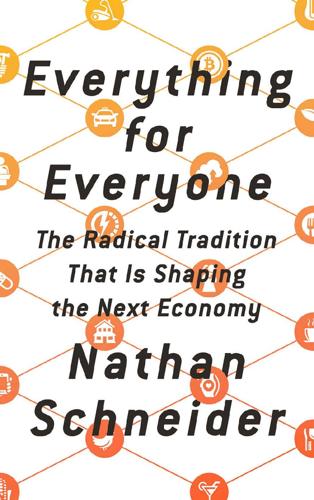
Everything for Everyone: The Radical Tradition That Is Shaping the Next Economy
by
Nathan Schneider
Published 10 Sep 2018
MXGM was meanwhile hatching a new organization, Cooperation Jackson, to carry on the work that had been started. Akuno enumerated a four-part agenda: a co-op incubator, an education center, a financial institution, and an association of cooperatives. Plans were soon underway to seed, first, three interlocking co-ops: an urban farm; a catering company named in honor of Lumumba’s wife, Nubia, who died in 2003; and a composting company to recycle the caterers’ waste back into the farm. Akuno raised money from foundations, entertainers, and small donors, and the Southern Reparations Loan Fund pitched in as well. Cooperation Jackson started buying up land for its own community land trust.

Net Zero: How We Stop Causing Climate Change
by
Dieter Helm
Published 2 Sep 2020
That means we can contemplate big carbon reductions from minimising the amount of transport in the food supply chains. Food production can be close to food consumption. This in turn may also help to control food waste, and hence require less production for any given level of consumption. This is the era of urban farms, farms in the desert, and farms in developing countries closer to their growing populations. All of this is helpful to decarbonisation only if it itself is a low-carbon process. Indoor crop growing requires light, water and nutrients. The light comes from LEDs. LEDs require electricity, and to help decarbonise this needs to come from low-carbon sources.
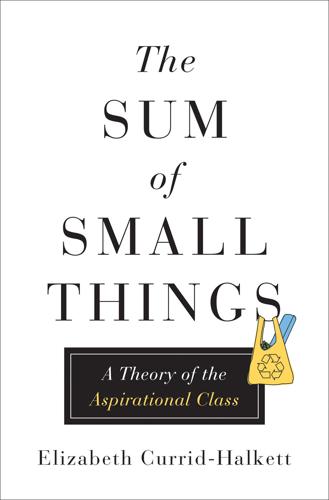
The Sum of Small Things: A Theory of the Aspirational Class
by
Elizabeth Currid-Halkett
Published 14 May 2017
All of these heirloom tomatoes and pesticide-free blackberries are underpinned by another surprising trend: For the first time since World War II, the number of agricultural farms is growing in America.8 In the UK, farmers’ market revenues grew 32% from 2002 to 2011.9 These statistics are part and parcel of a number of other unforeseen trends occurring within food production. Farmers’ magazines are gaining a greater following (and new ones are being published even today), farm-to-table restaurants are becoming commonplace, and community urban farms are the norm from Brooklyn to the Mission to Santa Monica. The ethos reinforcing these changes is perhaps most famously championed by Alice Waters, the godmother of the slow food movement and founder of Chez Panisse, one of the most challenging restaurants in the world at which to get a reservation.
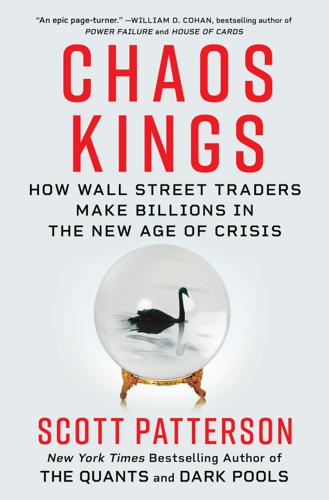
Chaos Kings: How Wall Street Traders Make Billions in the New Age of Crisis
by
Scott Patterson
Published 5 Jun 2023
Who the hell would want to live in Detroit? Disturbed by the city’s endemic urban blight, Spitznagel in the summer of 2014 cooked up a plan to alleviate at least some of it. He transported twenty goats from Idyll Farms to a crime-ridden neighborhood in the northwest part of Detroit and opened up an urban farming experiment. Spitznagel hoped to turn it into a major philanthropic operation, providing cheap goat meat, milk, and cheese to the community. He was also hoping the goats would nibble on the out-of-control weeds and other vegetation in the overgrown yards of the abandoned homes that dotted the neighborhood.

The new village green: living light, living local, living large
by
Stephen Morris
Published 1 Sep 2007
This is one of the most professional and interesting Web sites that you could possibly bookmark on your browser; almost every day they describe a new technology or technique for environmentalists. Their book, a compilation of their work over the last few years, is nothing less than The Whole Earth Catalog, that hippie bible, retooled for the iPod generation. There are short features on a thousand cool ideas: slow food, urban farming, hydrogen cars, messenger bags made from recycled truck tarps, pop-apart cell phones, and plyboo (i.e., plywood made from fast-growing bamboo). There are many hundreds of howto guides (how to etch your own circuit board, how to break in your hybrid car so as to maximize mileage, how to organize a “smart mob,” a brief gathering of strangers in a public place).
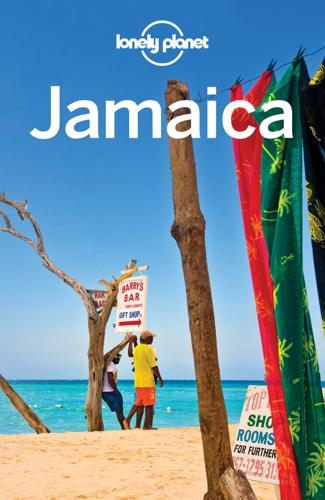
Lonely Planet Jamaica
by
Lonely Planet
WORTH A TRIP LIFEYARD – PAINT JAMAICA oLifeyardAREA (Paint Jamaica; MAP GOOGLE MAP ; %809-3198, 298-4313; www.facebook.com/lifeteam360; Fleet St; donation requested) An innovative art and permaculture scheme, Lifeyard is regenerating an area of downtown Kingston once beset with gang problems. The program is centered on an urban farming project, and its Rastafari organizers have also worked with the community and visiting artists to cover the whole street with beautiful and uplifting murals. It's not just pretty pictures though – the art is backed-up by youth projects including breakfast and homework clubs, workshops, educational support and media training so the community can tell their own stories.
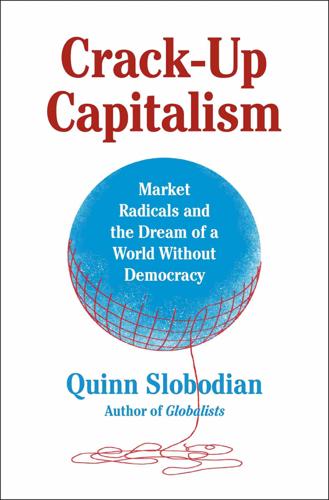
Crack-Up Capitalism: Market Radicals and the Dream of a World Without Democracy
by
Quinn Slobodian
Published 4 Apr 2023
In Masande Ntshanga’s 2019 speculative novel Triangulum, set largely in Ciskei, the protagonist’s parents have moved to the Bantustan to work in Sebe’s government. A project that sounds like it could have been designed by Louw turns townships into “self-contained, privately owned zones with standardized populations of 200,000 and streamlined economic functions, including energy production, recycling, manufacturing, and urban farming.”85 A high-rise “Revolution Tower,” the tallest on the continent, stands in Johannesburg, built by a foreign corporation to signal to investors that the climate is fine. Watching a debate on television, the narrator sees a sociologist denounce “the zones as a new form of apartheid,” while a community organizer responds with resignation that “people needed to eat.”

Radicals Chasing Utopia: Inside the Rogue Movements Trying to Change the World
by
Jamie Bartlett
Published 12 Jun 2017
The winners, announced a couple of months later, were Raw-NYC Architects, who won 10,000 merits with ‘Liberland: An algae-powered sustainable micro-nation of innovators’. Buildings would be stacked like a pancake, so as people arrive it will increasingly resemble a Tetris screen of scrambled blocks on top of each other. Each layer used algae urban farming for food and power. 12. Paul Bradbury from the website Total Croatia News, sitting next to me all morning, said it was one of the most peculiar things he’d ever seen and wrote an article about it all called ‘Liberland conference: Reflections on a weekend in Alice in LiberWonderLand’. 13. He gives a lot of money to various libertarian causes, including offering US senator Bernie Sanders $100,000 to debate with him about socialism versus libertarianism.
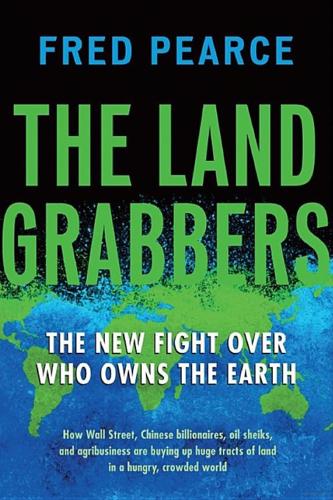
The Land Grabbers: The New Fight Over Who Owns the Earth
by
Fred Pearce
Published 28 May 2012
As much as a tenth of the world’s food is grown within cities. Most of it comes from small farmers—micro-farmers, even—cultivating roadside plots and wastelands, rooftops and military bases, garbage dumps and parks, gardens and greenhouses, railway yards and university campuses, and scraps of land beneath bridges or beside canals. Urban farms are a major source of leafy vegetables. In Haiti, people grow vegetables in old truck tires and even kettles. And they even supply meat. In Lima, Peru, they raise guinea pigs in squatter settlements. In Nairobi, chickens fatten in coops bolted to apartment walls. Sheep graze on the roadsides of the Armenian capital Yerevan.

Together
by
Vivek H. Murthy, M.D.
Published 5 Mar 2020
This helped her regain a sense of herself, but she still felt off-kilter and tentative when interacting with others. “I felt that if I left campus and never returned, there wouldn’t be anyone that I would miss, nor would I feel missed by others.” That summer, however, everything changed. Back home, she got a job on an urban farm, where she could get her hands dirty with work she deeply loved, and she enrolled in a monthlong yoga teacher training that she described as “transformative.” “It wasn’t so much the yoga that healed me, but rather the community.” This group of fifteen spanned all stages and backgrounds of life.

The City on the Thames
by
Simon Jenkins
Published 31 Aug 2020
Canary Wharf itself was rescued by a Qatari sovereign wealth fund, while foreign banks lapped up the Wharf’s cheap accommodation. They did not care where Poplar was, so long as it had a computerized trading floor, no taxes and no meddlesome government. By the end of the 1990s, the Isle of Dogs was employing 50,000 people, with its own new residential quarter spreading along the banks of the Thames. Seen from the island’s urban farm, the Mudchute, a mile to the south, the Wharf’s towers rose eerily over grazing sheep and llamas, like a film set in Dubai. There was a second reason I was wrong. Canary Wharf, the symbol of private capitalism, was massively bailed out by big government. Shocked by the venture’s initial failure, Thatcher threw money at it.
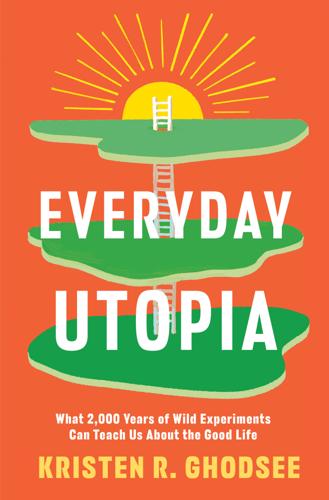
Everyday Utopia: What 2,000 Years of Wild Experiments Can Teach Us About the Good Life
by
Kristen R. Ghodsee
Published 16 May 2023
New York: Columbia University Press, 1981. Chapter Five Bakunin, Mikhail. God and the State. Project Gutenberg, https://www.gutenberg.org/ebooks/36568. Barber, Malcom. The Cathars. New York: Routledge, 2013. Birnbaum, Juliana, and Louis Fox. Sustainable Revolution: Permaculture in Ecovillages, Urban Farms, and Communities Worldwide. Berkeley: North Atlantic Books, 2014. Brockett, L. P. The Bogomils of Bulgaria and Bosnia: Or, The Early Protestants of the East—an Attempt to Restore Some Lost Leaves of Protestant History. Philadelphia: American Baptist Publications Society, 2017. Coston, Michael.
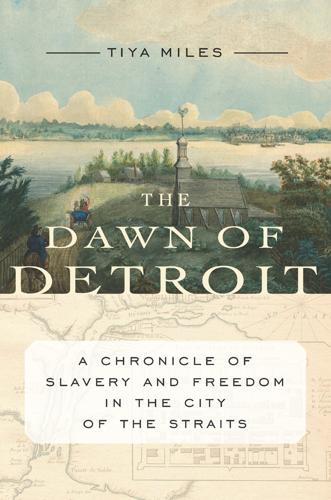
Dawn of Detroit
by
Tiya Miles
Published 13 Sep 2017
But Peter Denison had won a partner in Elijah Brush, not resulting from Brush’s sympathy or guilt, or even an antislavery stance adopted by the attorney. These men had spent months as comrades in arms, serving in segregated units of the Michigan militia. Peter Denison and his wife had lived with Elijah and Adelaide Brush, in the intimate quarters of the couple’s urban farm. Although Elijah could not have felt the anger, fear, and humiliation experienced by Peter Denison, whose children were counted as chattel, he could have shared Peter’s sense of moral outrage. Hadn’t Peter been willing to risk his life for Detroit, the capital of Michigan Territory? And yet the court of that territory refused to protect his children as full-fledged persons.
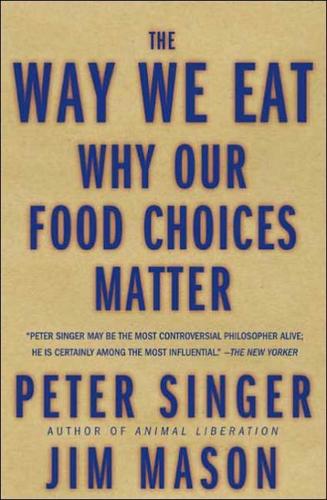
The Way We Eat: Why Our Food Choices Matter
by
Peter Singer
and
Jim Mason
Published 1 May 2006
Most is gobbled by food traders, brokers, and shippers ... Personally, I think that First Worlders can best reduce poverty in their own backyard-among struggling rural populations and the burgeoning class of inner-city food producers-by eating local." (By "inner-city food producers," Halweil means community gardens and urban farms, which he grants are not yet producing on a significant scale, although he regards them as having great educational value in showing what can be done to produce healthy food.)9 Halweil is right to point out that when food passes through many intermediaries, often only a small fraction of what we pay for it gets back to the original producer.

Building and Dwelling: Ethics for the City
by
Richard Sennett
Published 9 Apr 2018
Outside the UK and the US, Howard’s influence has appeared in Svit, Slovakia, in the Residencial San Felipe of Lima, Peru, in Alto da Lapa and Alto de Pinheiros in São Paulo, Brazil, and at the other end of the world, in Sunshine, near Melbourne, Australia, and in Thimphu, the capital of Bhutan. The ‘garden’ in garden cities matters in this regard. Nature was to be put to use, in giant vegetable plots in the green belts – the garden city planners were the first to envisage urban farming. But more, they thought that through the right designs, nature and the built environment could be brought into harmony. In the early modern era, landscape designers had split into two camps about how to create a balanced environment. One was through geometric discipline. In the late seventeenth century wide ploughs and drum-seeders allowed crops to be grown in long, even rows, matching the straight lines of Le Nôtre’s gardens in Versailles.
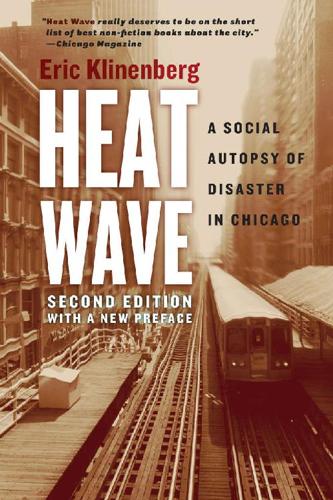
Heat Wave: A Social Autopsy of Disaster in Chicago
by
Eric Klinenberg
Published 11 Jul 2002
They are a far cry from the investments in social infrastructure that Chicago’s most depleted neighborhoods need to become safer, healthier, and more resilient, and they do little to advance the larger “heat-emergency plan” that the climate crisis demands. In Englewood and North Lawndale, meanwhile, residents and community organizations have invented their own version of the Rotterdam strategy, turning their main problem, abandonment, into an advantage. Their goal is to transform their neighborhoods into hubs of urban farming, with gardens that create stronger community ties as well as fresh produce and shade. But there’s been little public support for these efforts in Chicago. Although after the heat wave, the local government built a lush green roof atop City Hall, neighborhood groups in the most impoverished, depleted areas have been left scrambling for basic resources.
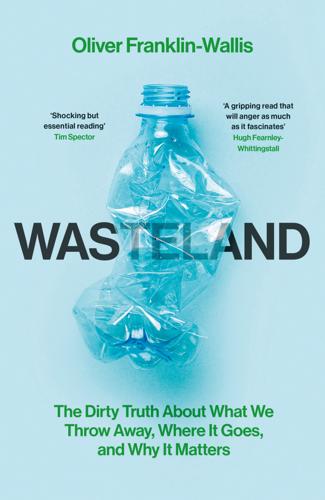
Wasteland: The Dirty Truth About What We Throw Away, Where It Goes, and Why It Matters
by
Oliver Franklin-Wallis
Published 21 Jun 2023
Its world-leading rot infrastructure is the result of a mandatory food-waste recycling policy that the South Korean government launched in 2013 in order to tackle its then-famously high levels of food waste. The country now recycles 95 per cent of it – up from just 2 per cent in 1995 – via a combination of biogas and compost, the result of which is used to feed a blossoming network of rooftop gardens and urban farms. Among compost nerds, South Korea is considered nirvana. * * * We reach the end of this field of rows, where a large trommel machine – an industrial sieve, effectively – has been set up. ‘We do two grades: a 25mm, which is what farmers will take and dig into their fields; then we do a 10mm, which is the stuff that we bag up and sell.’
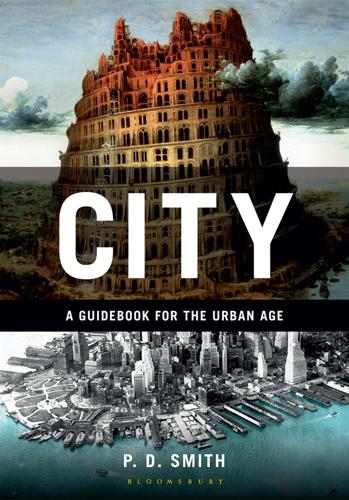
City: A Guidebook for the Urban Age
by
P. D. Smith
Published 19 Jun 2012
David Satterthwaite, ‘Cities’ Contribution to Global Warming: Notes on the Allocation of Greenhouse Gas Emissions’, Environment and Urbanization, 20 (2008), 543. 22. David Dodman, ‘Blaming cities for climate change? An analysis or urban greenhouse gas emissions inventories’, Environment and Urbanization, 21 (2009), 188–91 23. Satterthwaite (2008), 547; cf. Dodman (2009), 191. 24. William Wiles, ‘Urban Farming’, Icon, 72 (June 2009), 73. 25. Klaus Töpfer, Executive Director of the UN Environment Programme (UNEP) in 2005; cited from David J. Cuff, ‘Urban Trends’, in Cuff and Goudie (2009), 608. Similarly: ‘experts and policymakers increasingly recognize the potential value of cities to long-term sustainability.
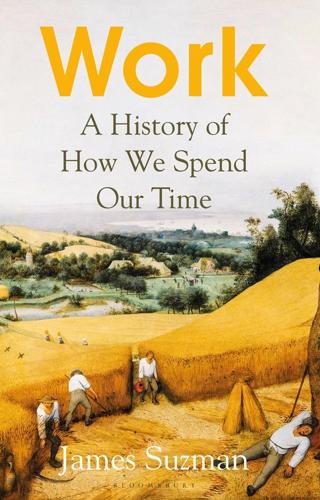
Work: A History of How We Spend Our Time
by
James Suzman
Published 2 Sep 2020
But it is also home to one of the world’s oldest continuous farming lineages, one that has been cultivating its own food and living in cities for 30 million years longer than our species has. The telltale signs of these ancient farming communities take the form of millions of high-rise buildings, each containing climate-controlled civic areas, urban farms, nurseries and royal quarters, all linked to one another by networks of carefully maintained thoroughfares. These cities – some of which are centuries old – are constructed from a cement of gold, white and red Kalahari sands. The tallest among them are two metres high and reach irregularly towards the sky with the same grace as the spires on the Sagrada Familia, Gaudi’s famous basilica in Barcelona.

Fulfillment: Winning and Losing in One-Click America
by
Alec MacGillis
Published 16 Mar 2021
He had found his new calling, but making it more difficult was the conspicuous lack of cooperation from the Point’s new owners, who seemed in a rush to erase the peninsula’s former identity as they turned it into an all-purpose logistics hub. Within the next year, the ownership group would announce the coming of a wind-turbine storage facility, an urban farming operation, and more warehouses, for Home Depot and Floor & Decor. It was not only that they had changed the name of Sparrows Point in 2016, to Tradepoint Atlantic. They were also showing scant interest in joining the list of local companies and organizations contributing to Keith’s efforts. “They’ve gotten rid of everything,” he said.
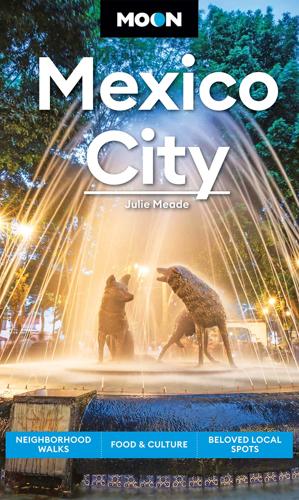
Moon Mexico City: Neighborhood Walks, Food & Culture, Beloved Local Spots
by
Julie Meade
Published 7 Aug 2023
Recreation COMMUNITY CENTERS S Huerto Roma Verde MOON MAP Jalapa 234, tel. 55/5564-2210, http://huertoromaverde.org; 10am-7pm Tues.-Sun..; Metro: Centro Médico, Metrobús: Campeche This wonderful ecological organization in the Roma has multiple facets. It maintains a large urban garden and chicken coop; hosts workshops in urban farming, composting, sustainable architecture, and other green topics; and oversees an ongoing program of ecology- and food-related events on the weekends, with themes ranging from edible insects to Mexican wines. If you stop by on the weekend, you can wander around the garden or have vegan snacks and craft beer on tap at one of the many shaded picnic tables.

Vanishing New York
by
Jeremiah Moss
Published 19 May 2017
They’ll contain luxury condos, office space, floors of interior shopping-mall-style retail, glamorized suburban food courts, and some “affordable” housing (though not enough to make up for all the homes destroyed in 1967). But, wait—there will be an Andy Warhol museum! No, there won’t. The museum plans fell through. But there will be a rooftop urban farm! And a crafting center! It will be a place where poor aspiring artisans will be taught “craft skills” and lessons in how to “produce and sell hand-made merchandise,” which, I imagine, they can hawk from an official Essex Crossing merchant’s stall, watching the tourists go by and praying they can unload enough woven leather bracelets and repurposed subway-token earrings to pay for groceries.
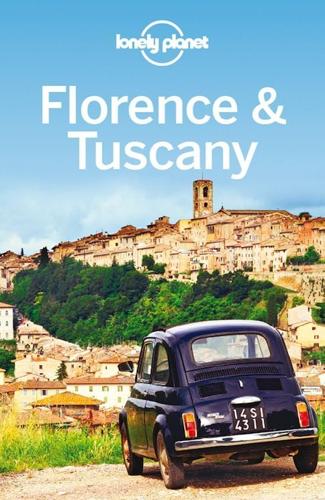
Lonely Planet Florence & Tuscany
by
Lonely Planet
,
Virginia Maxwell
and
Nicola Williams
Published 1 Dec 2013
There are few primary train routes: the only truly useful service is between Siena and Grosseto. Most towns and cities have strictly enforced Zone a Traffico Limitato (Limited Traffic Zones; ZTLs) in their historic centres. Top of Chapter Off the Beaten Track » To avoid Siena’s madding crowds, make your way to the Orto de’ Pecci (Click here), an urban farm, vineyard and medieval garden spread over one of the city’s green valleys. » Tramp along parts of the medieval pilgrimmage route known as the Via Francigena (Click here). » Meditate in the tranquil environs of the Abbazia di San Galgano (Click here), a ruined 13th-century abbey south of Siena.

If Mayors Ruled the World: Dysfunctional Nations, Rising Cities
by
Benjamin R. Barber
Published 5 Nov 2013
Using indirect features of the not-city to help define the city puts us then in the right state of mind but cannot take us very far. It is helpful to recognize that cities, neither dispersed nor isolated, are a not-wilderness (though they may try to import a modicum of wilderness in parks or gardens) as well as a not-agricultural and not-nomadic form of society (urban farms and stockyards aside). But to say what cities are not still cannot fully reveal what cities are. Competing typologies suggest how vexing the definitional question can be. For example, in his introduction to Max Weber’s The City, Don Martindale references “the crowding of people into small space” that “bears with it a tremendous increase in specialized demands” for things like “streets, public water supplies, public sewage systems, garbage disposal, police protection, fire protection, parks, playgrounds, civic centers, schools, libraries, [and] transportation systems”—and of course the “more complicated system of administration” needed “to handle the complex problems of engineering, law, finance and social welfare.”14 Such functional features point to a social ecology that can distinguish primary service communities, commercial communities, industrial towns, and special-focus cities like recreational resorts, political and cultural centers, and defense, penal, and charitable colonies from one another.

Behemoth: A History of the Factory and the Making of the Modern World
by
Joshua B. Freeman
Published 27 Feb 2018
Some young men became bikiniarstwo (“Bikini boys,” named after the bomb site, not the bathing suit), who adopted dress and hairstyles modeled after American youth culture. Similar problems arose elsewhere. In Dimitrovgrad, former peasants took over public parks and courtyards to plant vegetables and raised goats, chickens, and rabbits in the cellars of apartment blocks, until communist authorities finally managed, during the 1960s, to stop the urban farming. In Sztálinváros, young factory workers from urban backgrounds brawled with construction workers from the countryside.46 Communist authorities wrung their hands over the behavior and attitudes of the working class they were creating and intensified efforts to inculcate socialist urbanity. In private and sometimes even in public, they acknowledged that the leap to socialist personhood was not taking place as planned.
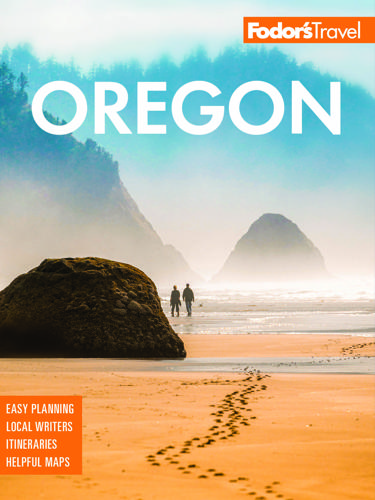
Fodor's Oregon
by
Fodor's Travel Guides
Published 13 Jun 2023
Hood and—on the Washington side—Mt. Adams. The bustling downtown of more than 40 buildings dating from the 1890s to the 1930s and more recently developed Columbia River waterfront make this charming town the Gorge’s hub for dining, lodging, and shopping and a hugely popular weekend destination. You’ll find plenty of urbane farm-to-table restaurants, up-and-coming craft breweries and wine-tasting rooms, and nicely curated boutiques and art galleries. The surrounding countryside abounds with orchards and vineyards, enticing fans of U-pick farmsteads and tasting rooms. Wineries in Hood River and also across the river from roughly White Salmon to Maryhill grow a much broader range of grapes than Oregon’s famous Willamette Valley, and wine touring has become one of the area’s top draws.

Eastern USA
by
Lonely Planet
That changes with this casual neighborhood seafood place in the heart of the Highlands run by a bunch of good ol’ fishing buddies. Fresh blackboard catches of the day supplement stunning staples such as lobster tacos ($18), coastal trout ($24) and a heap of delicious sides (creamy grits, jalapeño corn-bread pudding). It only serves eco-acceptable fish and uses hydroponic greens grown with reclaimed water from high-tech urban farms inside reused shipping containers. Futuristic, fun and fabulous. Fritti PIZZERIA $$ (www.frittirestaurant.com; 309 N Highland Ave NE; pizza $10-15; 11:30-3pm & 5:30-11pm, till midnight Fri & Sat, 12:30-10pm Sun) Staunchly traditional pizza Napoletana emerges from an $18,000, 13,000lb, 1100°F (593°C) Uno Forno brick oven, hand-built brick-by-brick by the Stefano Ferrara – Naples’ pizza God – with 100% Italian materials including volcanic ash from Mount Vesuvius.
…
While the aforementioned attributes are true, and although the city does waft a sort of bombed-out, apocalyptic vibe, it’s these same qualities that fuel a raw urban energy you won’t find anywhere else. Artists, entrepreneurs and young people are moving in, and a DIY spirit pervades. They’re converting vacant lots into urban farms and abandoned buildings into hostels and museums. Plus, they shred a mean guitar in ‘the D.’ Very mean. History French explorer Antoine de La Mothe Cadillac founded Detroit in 1701. Sweet fortune arrived in the 1920s, when Henry Ford began churning out cars. He didn’t invent the automobile, as so many mistakenly believe, but he did perfect assembly-line manufacturing and mass-production techniques.
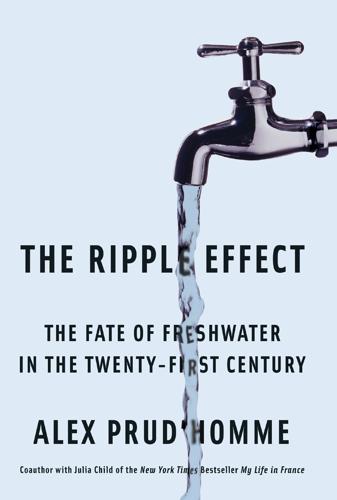
The Ripple Effect: The Fate of Fresh Water in the Twenty-First Century
by
Alex Prud'Homme
Published 6 Jun 2011
Philadelphia, for instance, has one of the nation’s oldest sewer systems, which is notorious for backing up and causing floods along the Delaware and Schuylkill Rivers. But over the next two decades, it plans to reinvent itself as a “porous city.” With a $1.6 billion investment, the city will plant thousands of trees, build rain gardens and urban farms, and create permeable basketball courts and parking lots that allow rain to slowly sink into gravel beds and eventually into the ground-water supply. The volume of water flowing through sewers will increase this century, as more people produce more sewage and global warming causes more rainfall.

What If We Get It Right?: Visions of Climate Futures
by
Ayana Elizabeth Johnson
Published 17 Sep 2024
Then we got the sequel, 50 More Things You Can Do to Save the Earth, and did those, too, including handwriting letters to every address in the phone book of our town of 1,000, telling them what they could do to save the planet. Ayana: Okay, this is all clicking for me now. Leah: Yeah. When I was old enough to get a job, my mom found a flier at church about work on a farm, and I thought, “Awesome, that’s an Earth thing to do.”[*49] So I got a job at The Food Project in Boston working with urban and peri-urban farms, growing food, and serving it in low-income farmers markets, and I totally fell in love. What is cooler than planting a seed and then watching it grow and getting to feed somebody? It made everything clear. Being a teenager is pretty complicated and confusing, but there was something elegantly simple and pure about cultivating a seed and feeding the community.

Architects of Intelligence
by
Martin Ford
Published 16 Nov 2018
We’ll be able to manufacture a lot more parts off-site, which will in turn lead to innovation in delivering, lifting, and moving those parts. There’s room for a lot of innovation there. Agriculture is another industry that will potentially see robotics and AI innovation, particularly with climate change disrupting our food chain. People are already talking about urban farming, bringing farming out of a field and into a factory. This is something where machine learning can be very helpful. We have the computation power now to close a loop around every seed we need to grow and to provide it with the exact nutrients and conditions that it needs without having to worry about the actual weather outside.
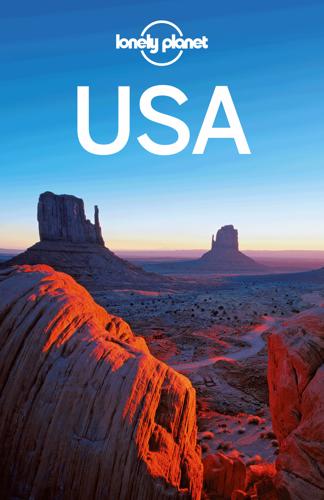
USA Travel Guide
by
Lonely, Planet
That changes with this casual neighborhood seafood place in the heart of the Highlands run by a bunch of good ol’ fishing buddies. Fresh blackboard catches of the day supplement stunning staples such as lobster tacos ($18), coastal trout ($24) and a heap of delicious sides (creamy grits, jalapeño corn-bread pudding). It only serves eco-acceptable fish and uses hydroponic greens grown with reclaimed water from high-tech urban farms inside reused shipping containers. Futuristic, fun and fabulous. Fritti PIZZERIA $$ (www.frittirestaurant.com; 309 N Highland Ave NE; pizza $10-15; 11:30-3pm & 5:30-11pm, till midnight Fri & Sat, 12:30-10pm Sun) Staunchly traditional pizza Napoletana emerges from an $18,000, 13,000lb, 1100°F (593°C) Uno Forno brick oven, hand-built brick-by-brick by the Stefano Ferrara – Naples’ pizza God – with 100% Italian materials including volcanic ash from Mount Vesuvius.
…
While the aforementioned attributes are true, and although the city does waft a sort of bombed-out, apocalyptic vibe, it’s these same qualities that fuel a raw urban energy you won’t find anywhere else. Artists, entrepreneurs and young people are moving in, and a DIY spirit pervades. They’re converting vacant lots into urban farms and abandoned buildings into hostels and museums. Plus, they shred a mean guitar in ‘the D.’ Very mean. History French explorer Antoine de La Mothe Cadillac founded Detroit in 1701. Sweet fortune arrived in the 1920s, when Henry Ford began churning out cars. He didn’t invent the automobile, as so many mistakenly believe, but he did perfect assembly-line manufacturing and mass-production techniques.
…
Pasco Kitchen & Lounge AMERICAN $$ (www.pascokitchen.com; 820 E University Blvd; lunch $9-14; dinner $9-14 11am-10pm Mon-Wed, 11am-11pm Thu, 11am-1am Fri & Sat, 11am-4pm Sun) The farmers market salad with yard bird is superb at this breezy new eatery near the university. The menu offers fresh, locally sourced homestyle favorites that are prepared with panache and a few tasty twists – think grass-fed all-natural burgers topped with braised pork belly and a fried egg, or grits with catfish and fried okra. The owners call it ‘urban farm fare;’ we call it delicious. Mi Nidito MEXICAN $ (www.minidito.net; 1813 S 4th Ave; mains $6-13; lunch & dinner Wed-Sun) Bill Clinton’s order at ‘My Little Nest’ has become the signature president’s plate, a heaping mound of Mexican favorites – tacos, tostadas, burritos, enchiladas etc – groaning under melted cheese.
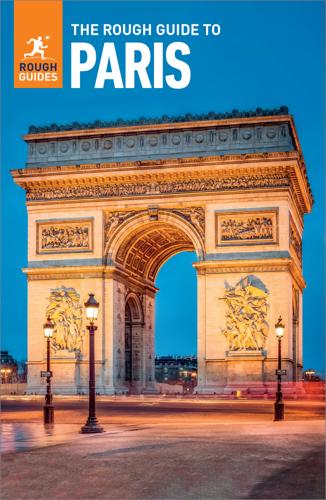
The Rough Guide to Paris
by
Rough Guides
Published 1 May 2023
Where the cool kids off to market hang out, this vast, ramshackle old space, in an abandoned train station right by the métro, has a hint of Berlin or Brooklyn about it with its dilapidated decor and alternative vibe – it’s all about recycling here, and yoga classes, plant sales, upcycling workshops and visits to urban farms are just some of the activities on offer. The weekend brunch (€€) is a good deal, including locavore dishes such as pissaladière or a Basque-style fricassée. Otherwise grab a coffee, fresh juice or evening apéritif and settle down by the picture windows overlooking the old railway line, the Petite Ceinture (see box, page 213) – or, on sunny days, head out to the plant-shaded roof terrace. €€ Saint-Denis For most of the twentieth century, Saint-Denis, 10km north of the centre of Paris and accessible by métro, was one of the most heavily industrialized communities in France, and a bastion of the Communist party.
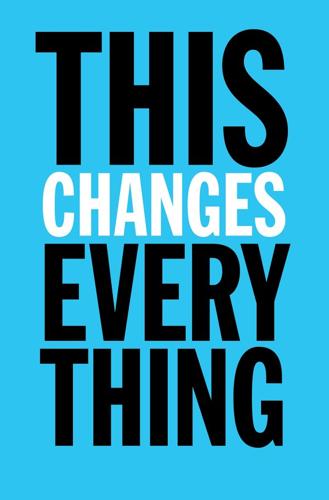
This Changes Everything: Capitalism vs. The Climate
by
Naomi Klein
Published 15 Sep 2014
And even in places that are lucky enough to have been spared (so far) all these threats, climate change is demolishing the idea that any countercultural pocket can provide a safe haven. In August 2011, that became clear to the organic farmers in Vermont who had pioneered one of the most advanced and sustainable local agriculture systems in North America. Probably most famous is the Intervale, a network of urban farms in Burlington that supplies roughly 10 percent of the city’s fresh food, while at the same time composting its waste and sustainably generating a significant portion of its power. But when Hurricane Irene descended on the state, floodwaters destroyed not only historic covered bridges but as Bill McKibben, a Vermonter and staunch supporter of food localization, said to me shortly after, “It washed away huge amounts of that beautiful local agriculture.
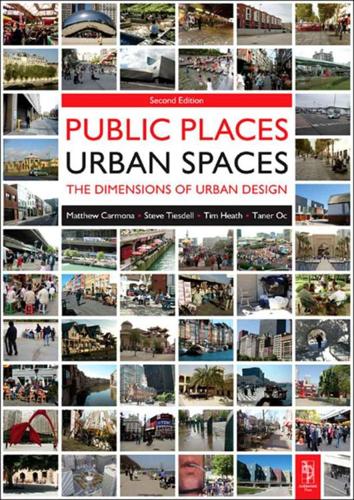
Public Places, Urban Spaces: The Dimensions of Urban Design
by
Matthew Carmona
,
Tim Heath
,
Steve Tiesdell
and
Taner Oc
Published 15 Feb 2010
Self-sufficiency (see Chapter 11) Demonstrate a sense of public sector civic responsibility Encourage private sector civic responsibility Provide bicycle storage connecting to the Internet Encourage self-policing through design Provide space for small-scale trading Provide bicycle parking facilities Build a sense of community Involve communities in decision-making Encourage local food production – allotments, gardens, urban farms Pay locally for any harm Design to encourage cycling Encourage environmental literacy through example and promotion Ensure consultation and participation in vision-making and design 9. Pollution Reduction (see Chapter 12) Re-use and recycle waste water Insulate for reduced noise transmission – vertically and horizontally On-site foul water treatment using SUDs Reduce hard surfaces and run-off Design in recycling facilities Design well-ventilated space to prevent pollution build-up Give public transport priority Match projected CO2 emissions with tree planting Plant trees to reduce pollution Tackle light pollution Question ‘end-of-pipe’ solutions to water/sewerage disposal Control private motorised transport Clean and maintain the city 10.
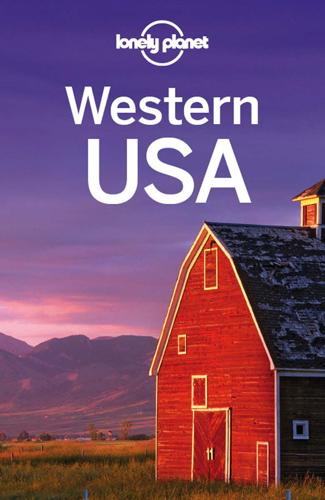
Western USA
by
Lonely Planet
Pasco Kitchen & Lounge AMERICAN $$ (www.pascokitchen.com; 820 E University Blvd; lunch $9-14; dinner $9-14 11am-10pm Mon-Wed, 11am-11pm Thu, 11am-1am Fri & Sat, 11am-4pm Sun) The farmers market salad with yard bird is superb at this breezy new eatery near the university. The menu offers fresh, locally sourced homestyle favorites that are prepared with panache and a few tasty twists – think grass-fed all-natural burgers topped with braised pork belly and a fried egg, or grits with catfish and fried okra. The owners call it ‘urban farm fare;’ we call it delicious. Mi Nidito MEXICAN $ (www.minidito.net; 1813 S 4th Ave; mains $6-13; lunch & dinner Wed-Sun) Bill Clinton’s order at ‘My Little Nest’ has become the signature president’s plate, a heaping mound of Mexican favorites – tacos, tostadas, burritos, enchiladas etc – groaning under melted cheese.
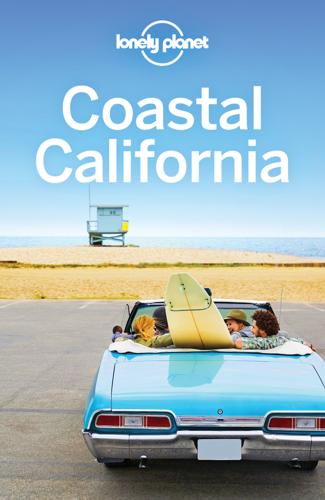
Coastal California Travel Guide
by
Lonely Planet
Today no Bay Area star chef's tasting menu would be complete without a few foraged ingredients – including wild chanterelles found beneath California oaks, miner’s lettuce from Berkeley hillsides, and edible nasturtium flowers from SF backyards. But some pioneering San Francisco chefs are taking local a step further, growing herbs and hosting beehives right on their restaurant rooftops. Don't laugh: urban farming may be coming soon to a green roof near you. Food store in the Ferry Building, San Francisco | JUDY BELLAH / GETTY IMAGES © Napa & Sonoma Wine Country With international acclaim for Napa and Sonoma wines in the 1970s came woozy Wine Country visitors in need of food, and local cheese-makers and restaurateurs graciously obliged.
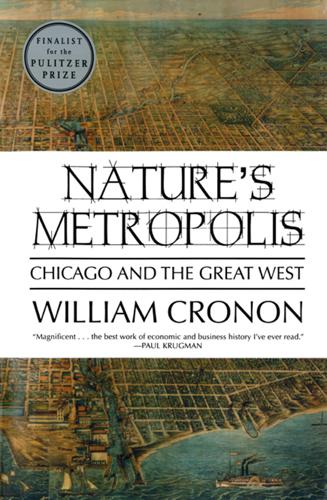
Nature's Metropolis: Chicago and the Great West
by
William Cronon
Published 2 Nov 2009
Low prices for eastern goods, and high prices for western ones: the combination was a sure recipe for success. In Chicago, the exchange of merchandise became an exercise in regional transmutation. Whether one turned dried apples into nails, or salted hams into lumber, or bushels of wheat into bolts of printed cotton, the net effect was to link West with East, rural with urban, farm with factory. City streets became places where the products of different ecosystems, different economies, and different ways of life came together and exchanged places. “There can be no two places in the world,” wrote Margaret Fuller in 1843, “more completely thoroughfares than this place and Buffalo.

Southwest USA Travel Guide
by
Lonely Planet
Pasco Kitchen & Lounge AMERICAN $$ (520-882-8013; www.pascokitchen.com; 820 E University Blvd; mains $9-14 11am-10pm Mon-Wed, 11am-11pm Thu, 11am-1am Fri & Sat, 11am-4pm Sun) The farmers market salad with yard bird is superb at this breezy new eatery near the University. The menu offers fresh, locally sourced comfort food that’s prepared with panache and a few tasty twists – think grass-fed all natural burgers topped by braised pork belly and a fried egg, or grits with catfish and fried okra. The owners call it urban farm fare; we call it delicious. Service can be a bit too easygoing, but that may be a first-year kink. Janos SOUTHWESTERN $$$ (520-615-6100; 3770 E Sunrise Dr; mains $20-50, tasting menu with wine $80; dinnerMon-Sat) French-trained James Beard Award-winner Janos Wilder is a veritable wizard in creating Southwestern compositions with that certain je ne sais quoi.
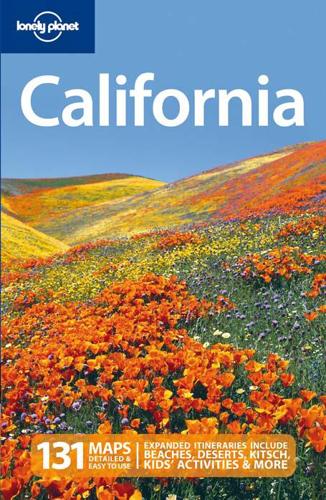
California
by
Sara Benson
Published 15 Oct 2010
A women’s worker-owned co-op, the BioFuel Oasis (Map; 510-665-5509; 1441 Ashby Ave; www.biofueloasis.com) is set to open a beautiful new station in fall 2008, pumping biodiesel fuel brewed from locally sourced waste vegetable oil. One of the largest retailers of biodiesel on the West Coast, their new home – which was renovated with salvaged building materials – will be both a sustainable fuel station and an urban farming depot. Landscaped by native and edible plants, with solar-powered pumps, folks will be able to drop off their used veggie oil, shop for books on urban beekeeping, pick up bulk organic chicken feed or just nose around for some ‘bio-bling.’ Hours are expected to be Tuesday through Saturday, but check the website for updates

Lonely Planet China (Travel Guide)
by
Lonely Planet
and
Shawn Low
Published 1 Apr 2015
Free maps are available in all visitor information centres. Shuitou and Jhushan villages have lots of B&Bs (minsu), and we love Qin Inn (Shuitou Yijiaqin %0910-395 565; http://qininn.tumblr.com; 63-64 Shuitou Village, 63-64 s/d incl breakfast NT$1200/2400; aW). Booking ahead is a must. In Kincheng, Urban@Farm House (La Place, %886-82-328-337; www.laplace-kinmen.com; 6 Minsheng Lu; d NT$1700-2400), a 24-room boutique hotel located opposite the bus station, is the place to stay. On Kinmen island, bus 7 links the ferry terminal with Shuitou village and Kincheng, and bus 3 runs between Kincheng, Jhushan and the airport.